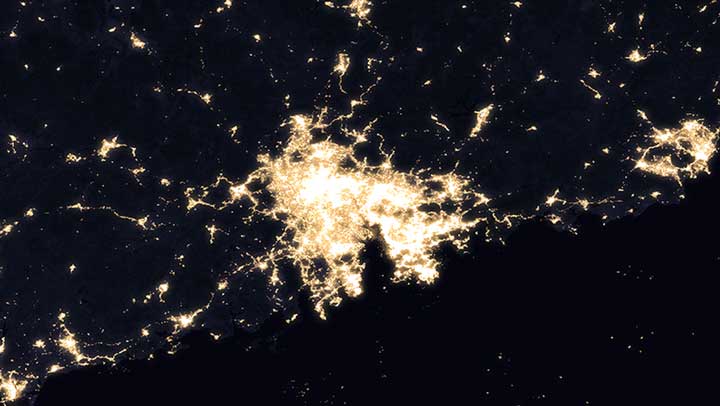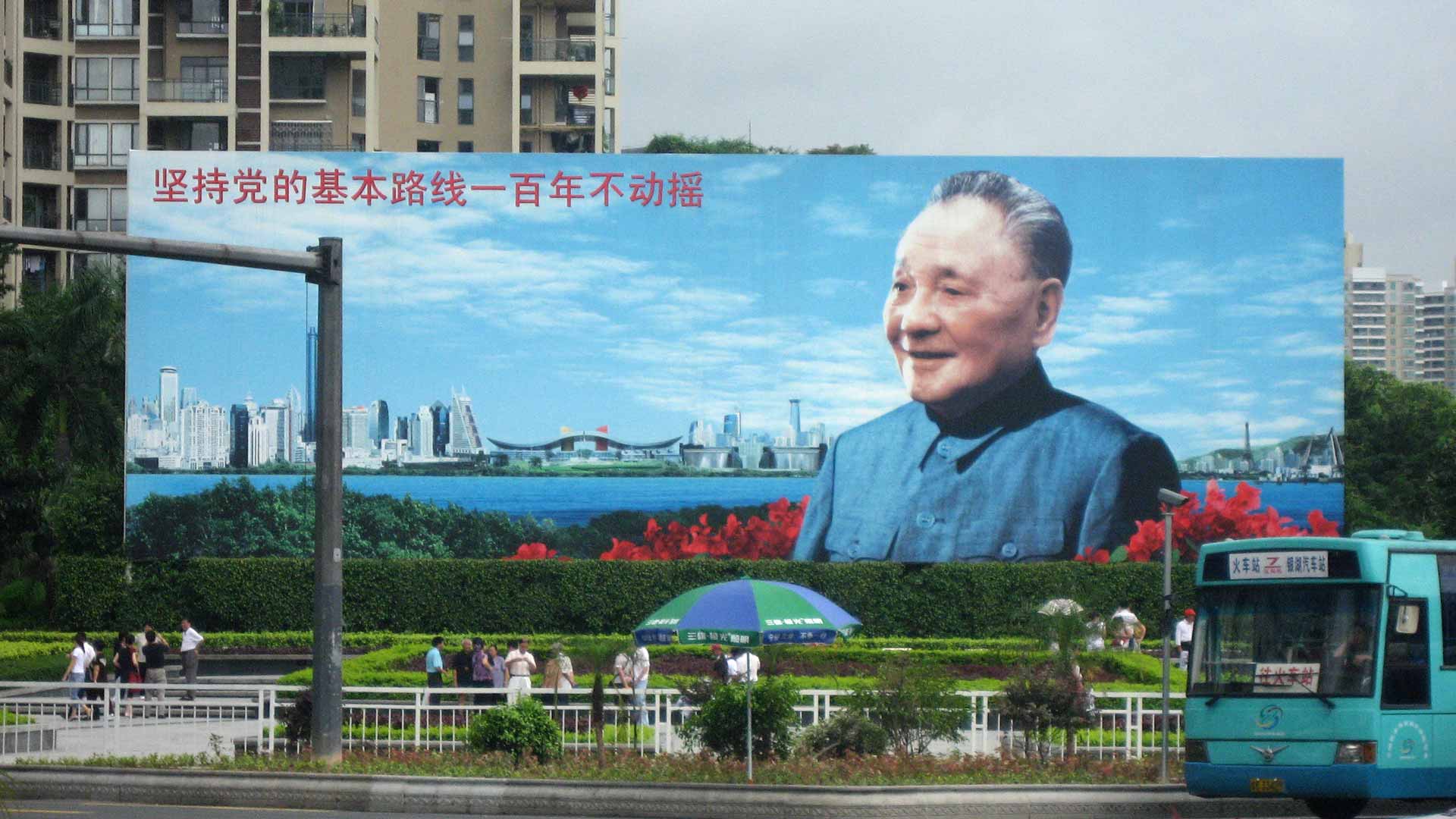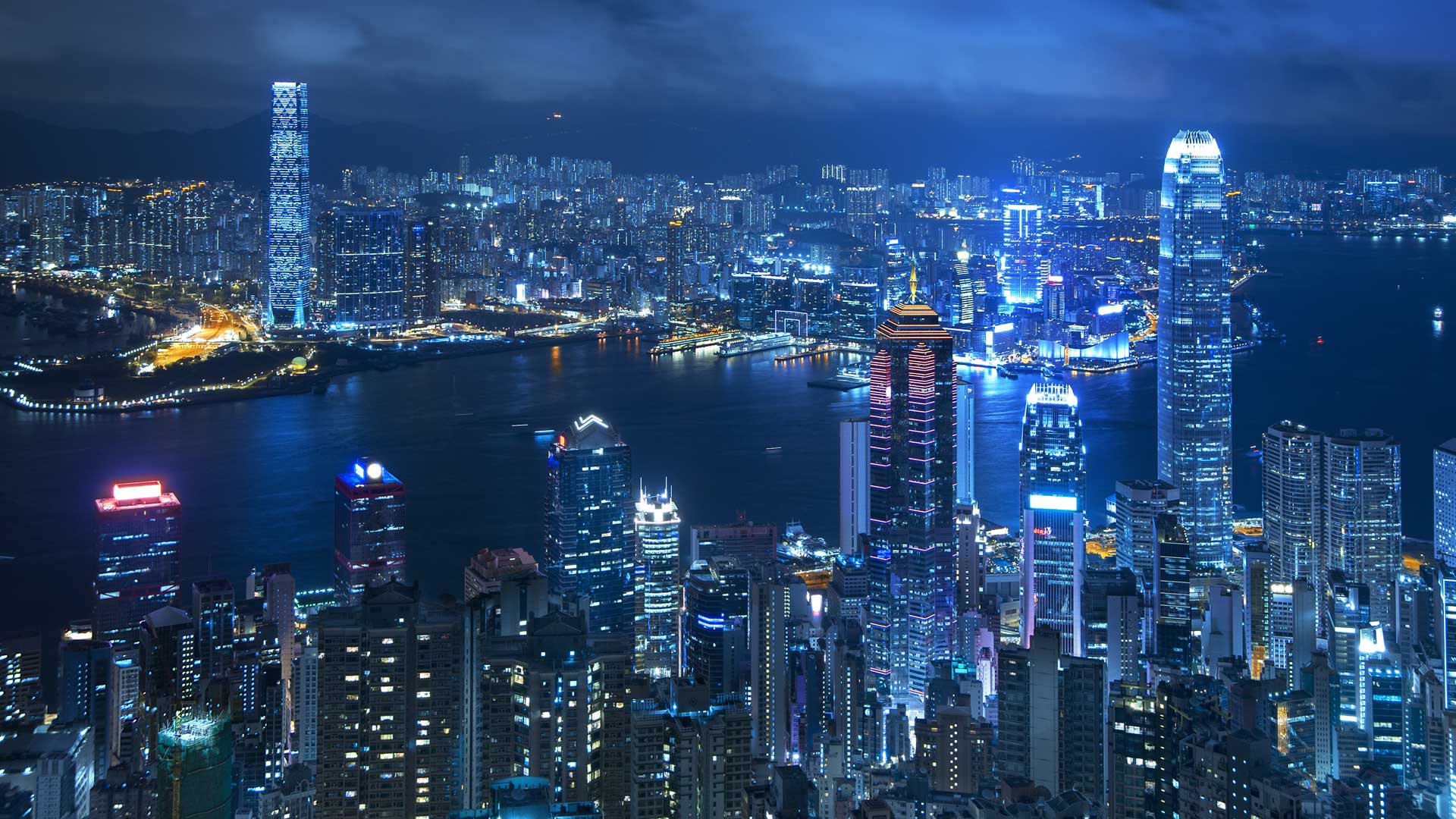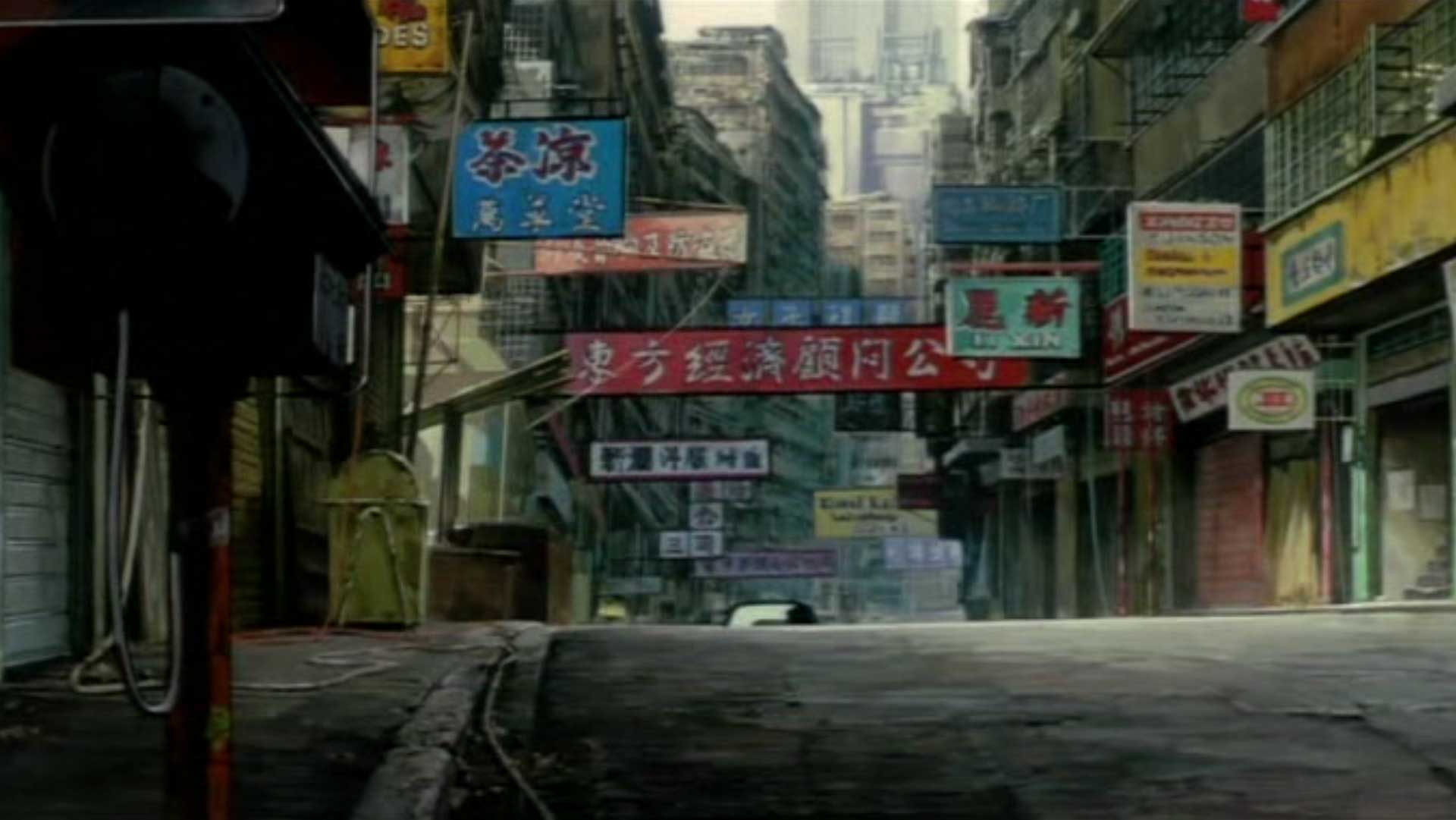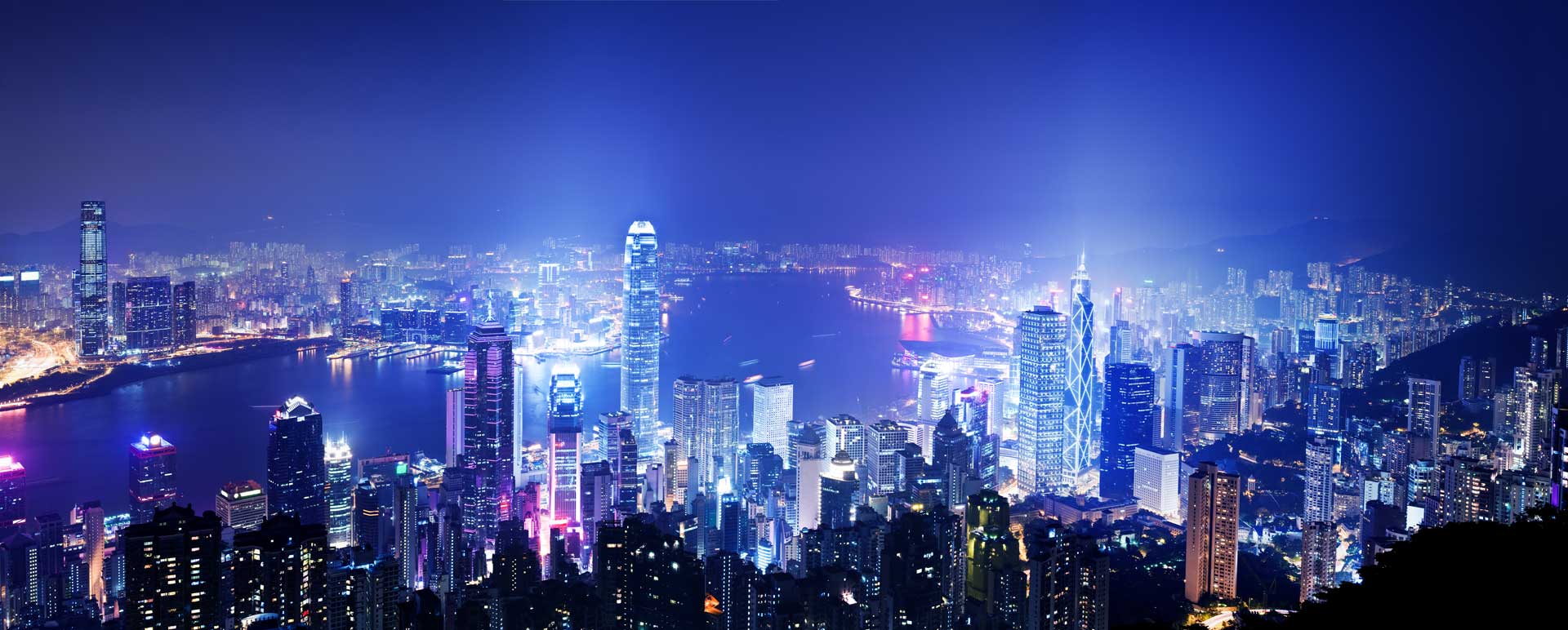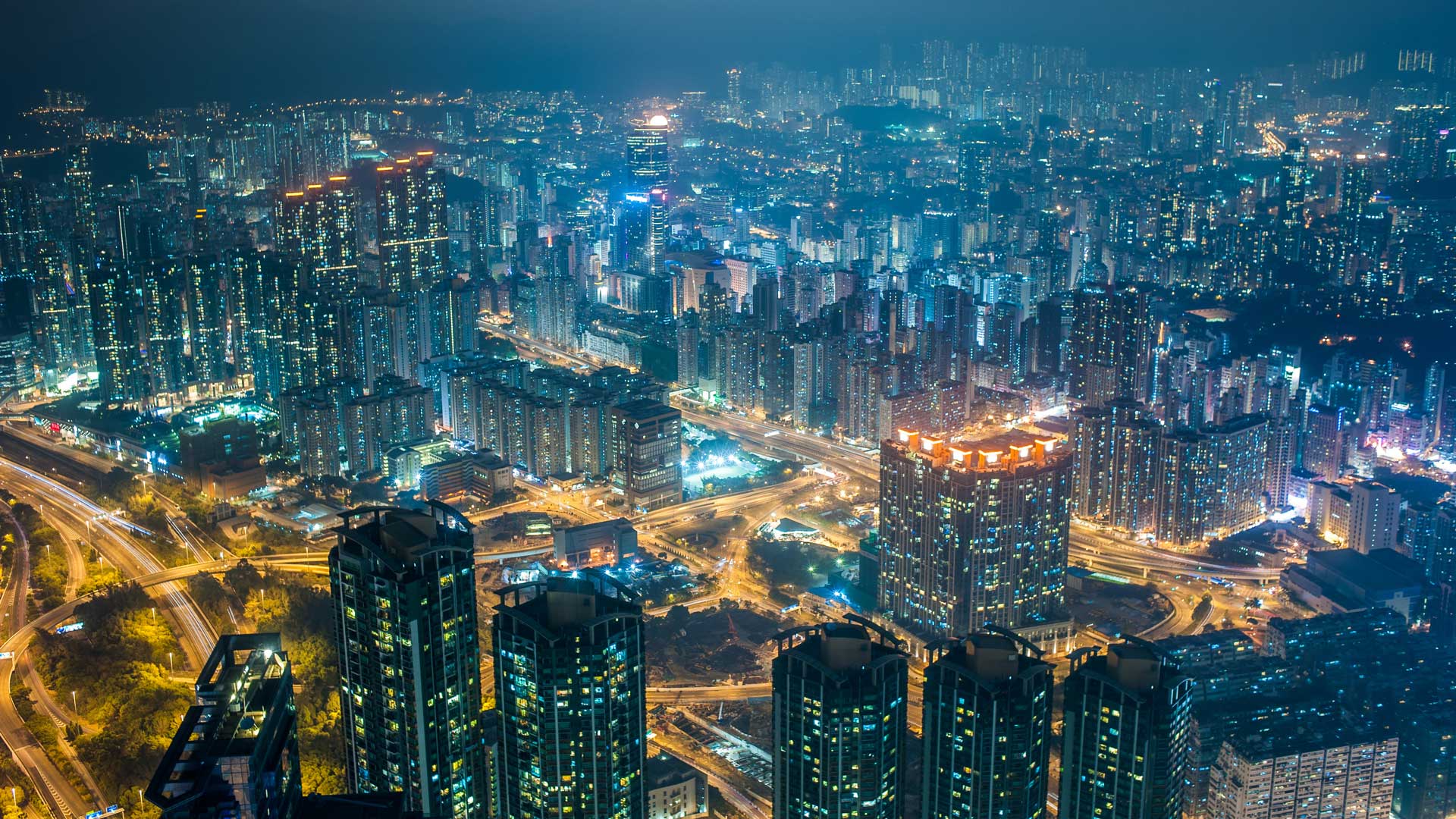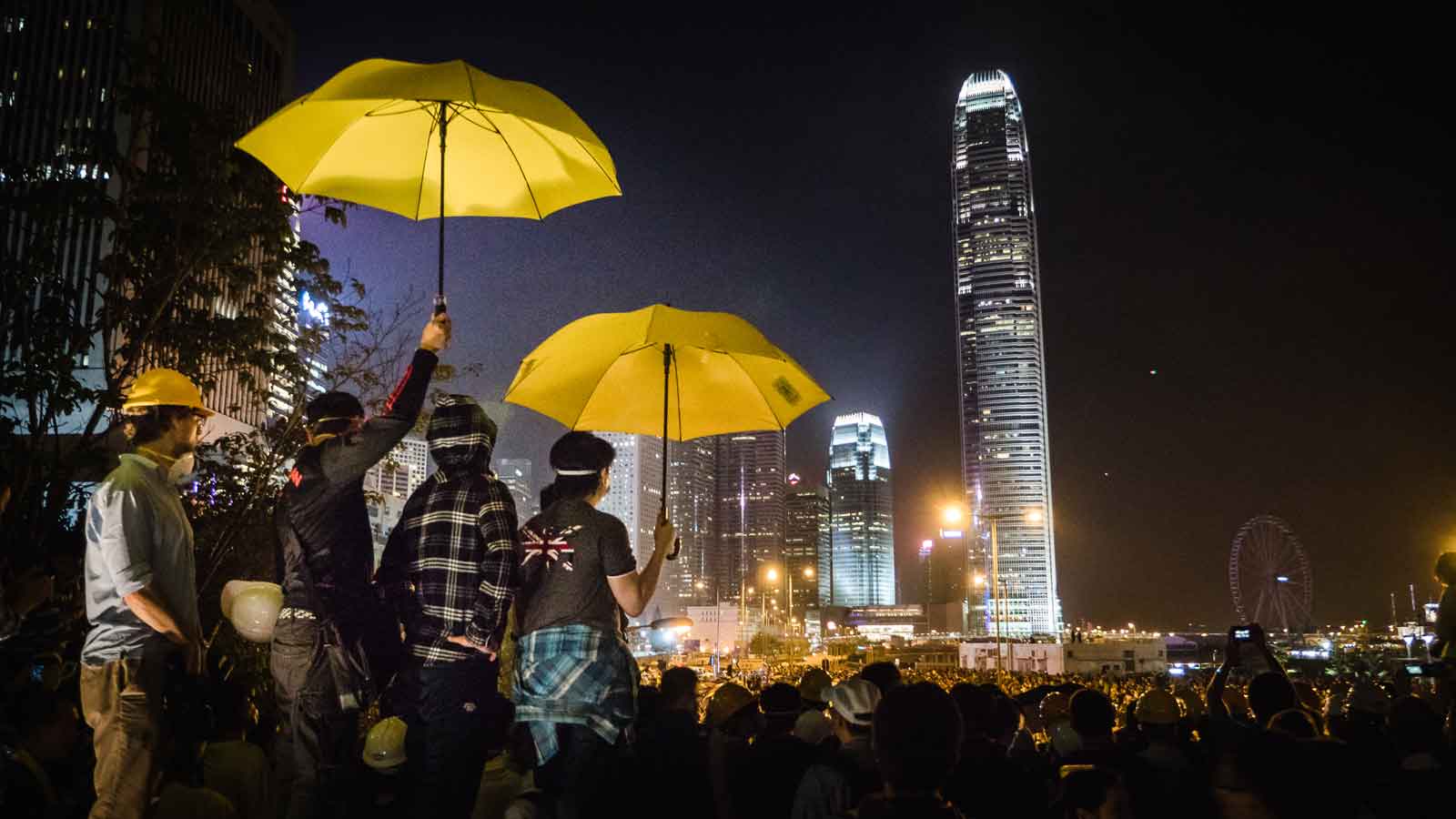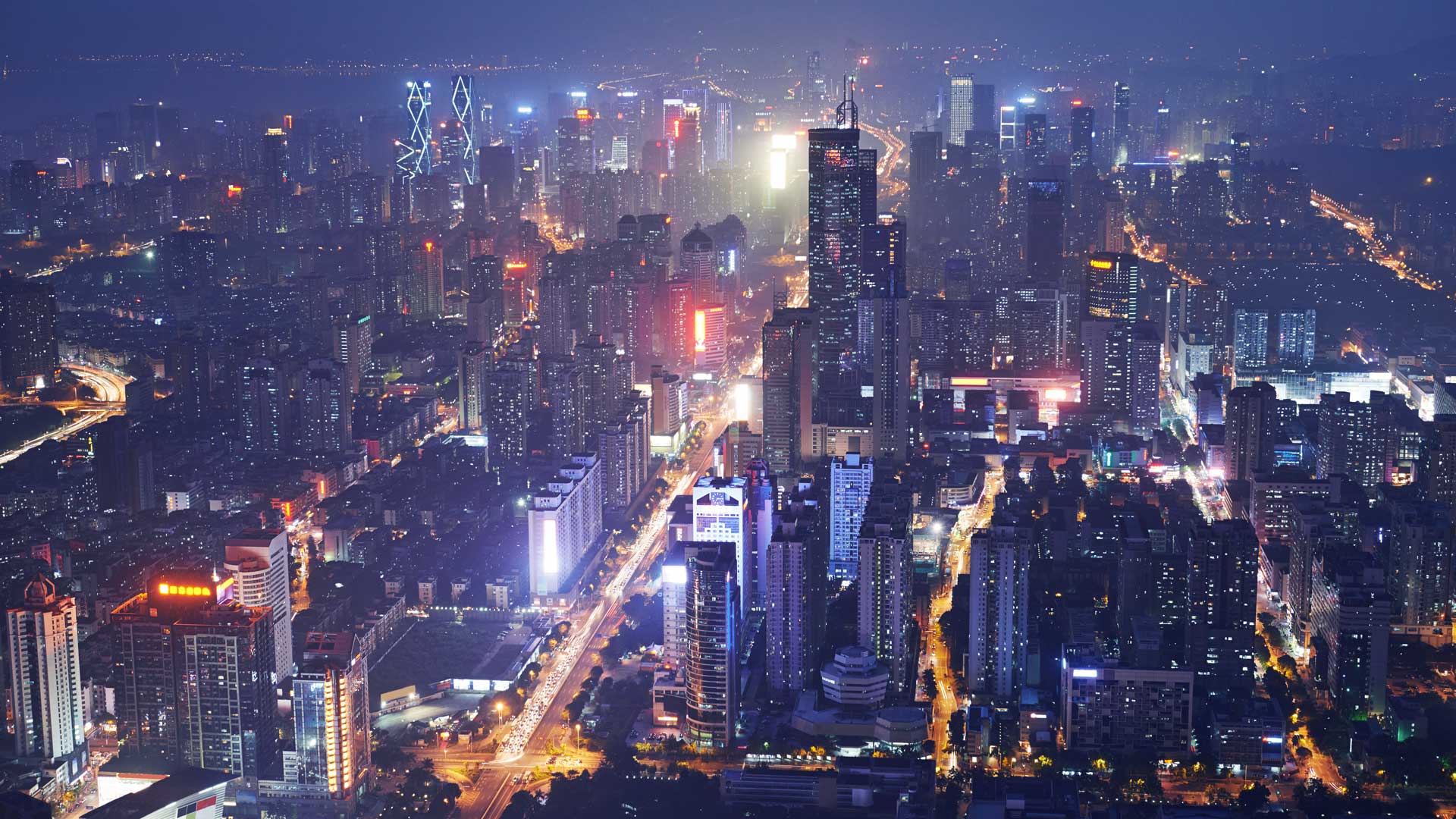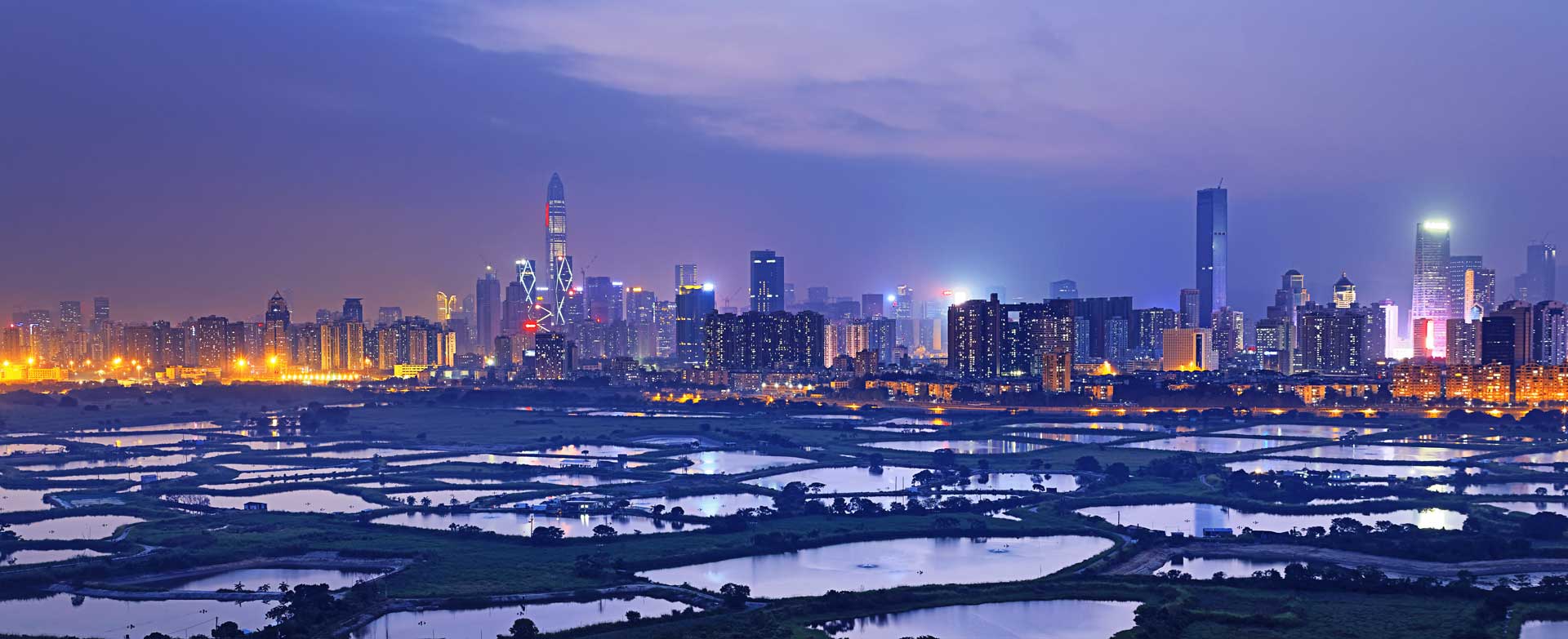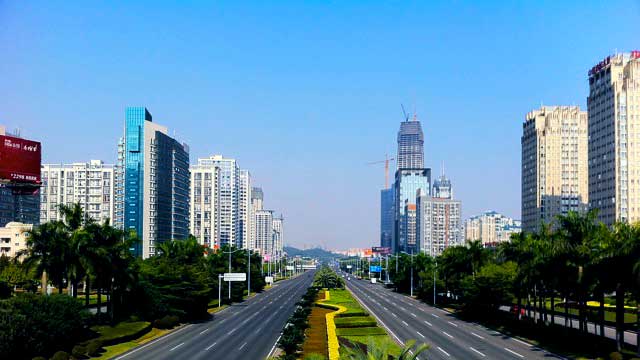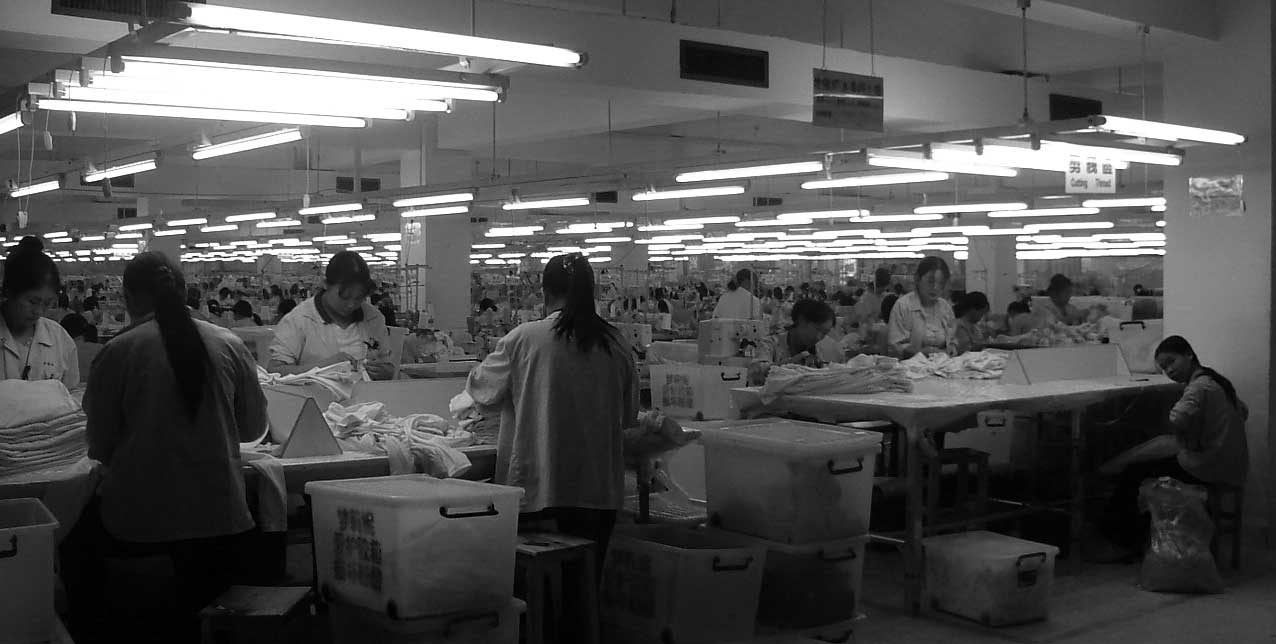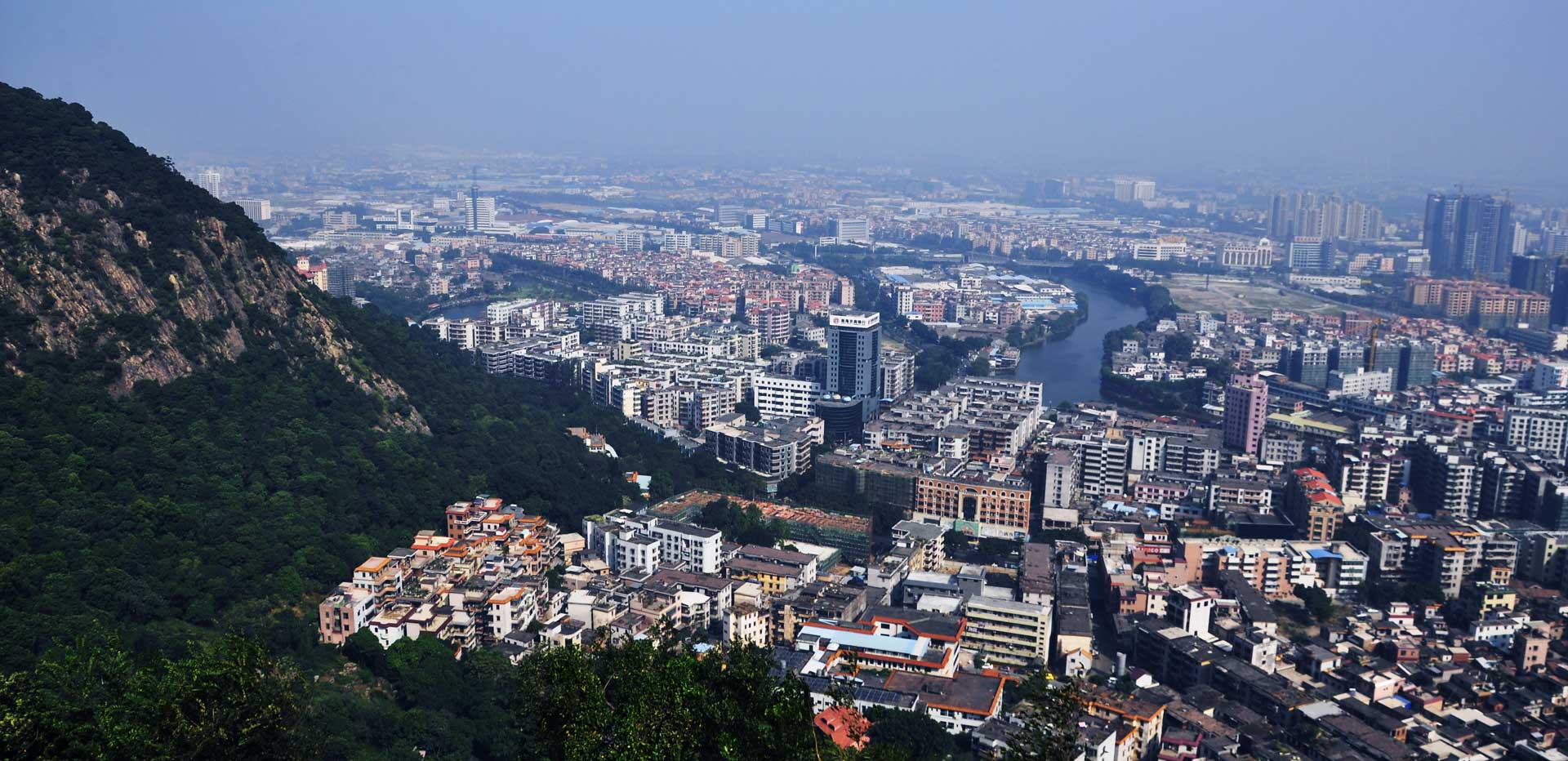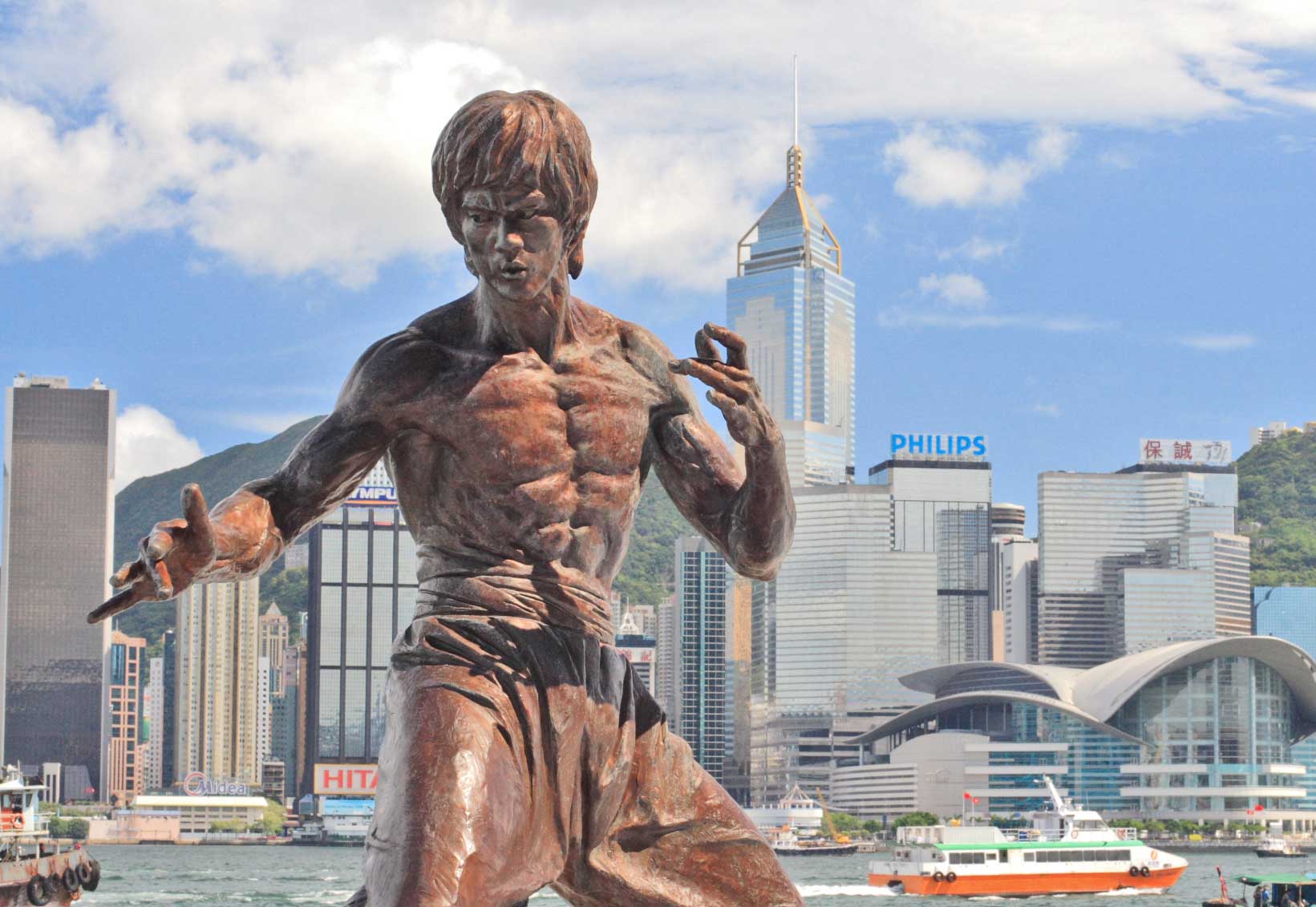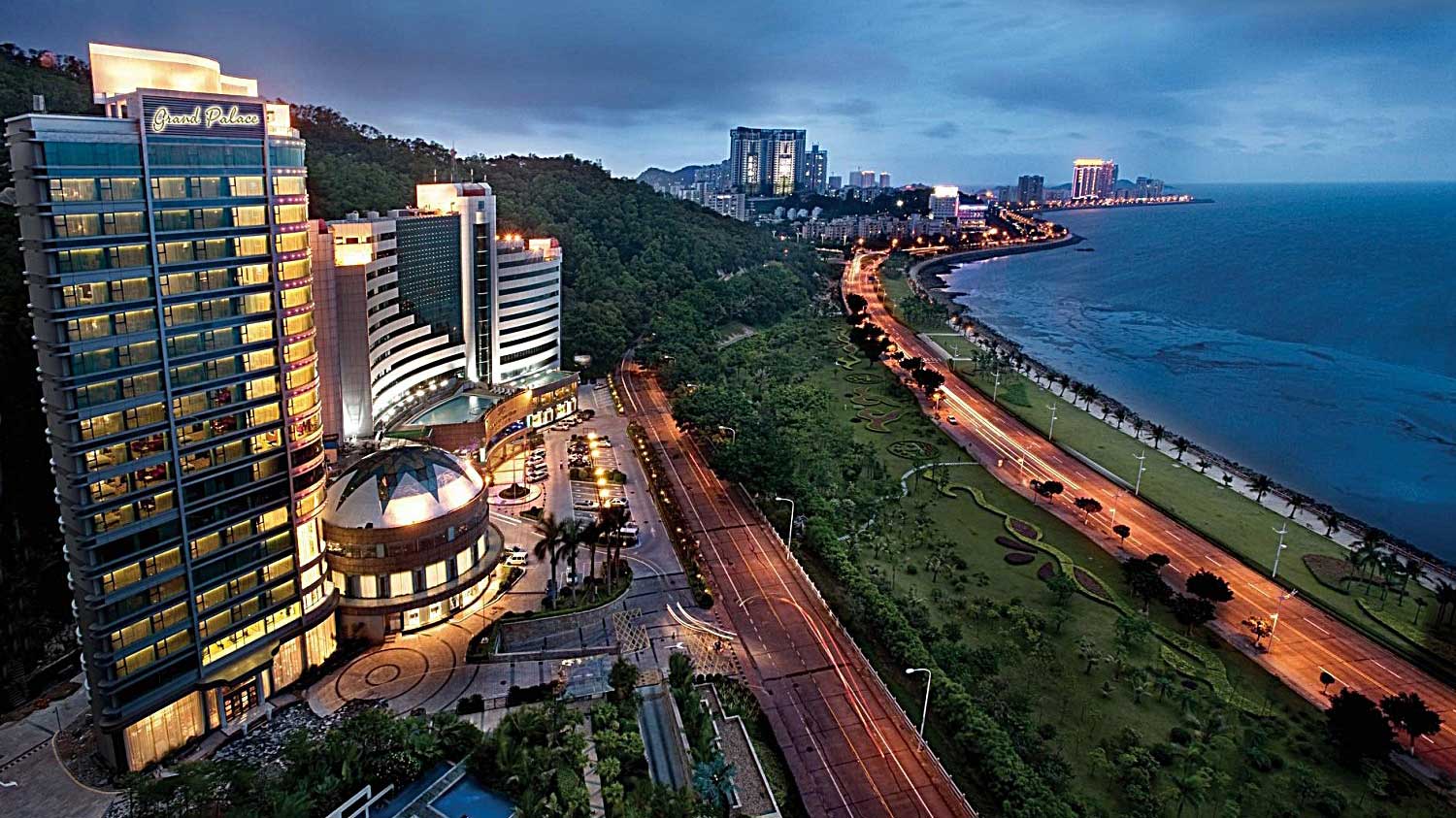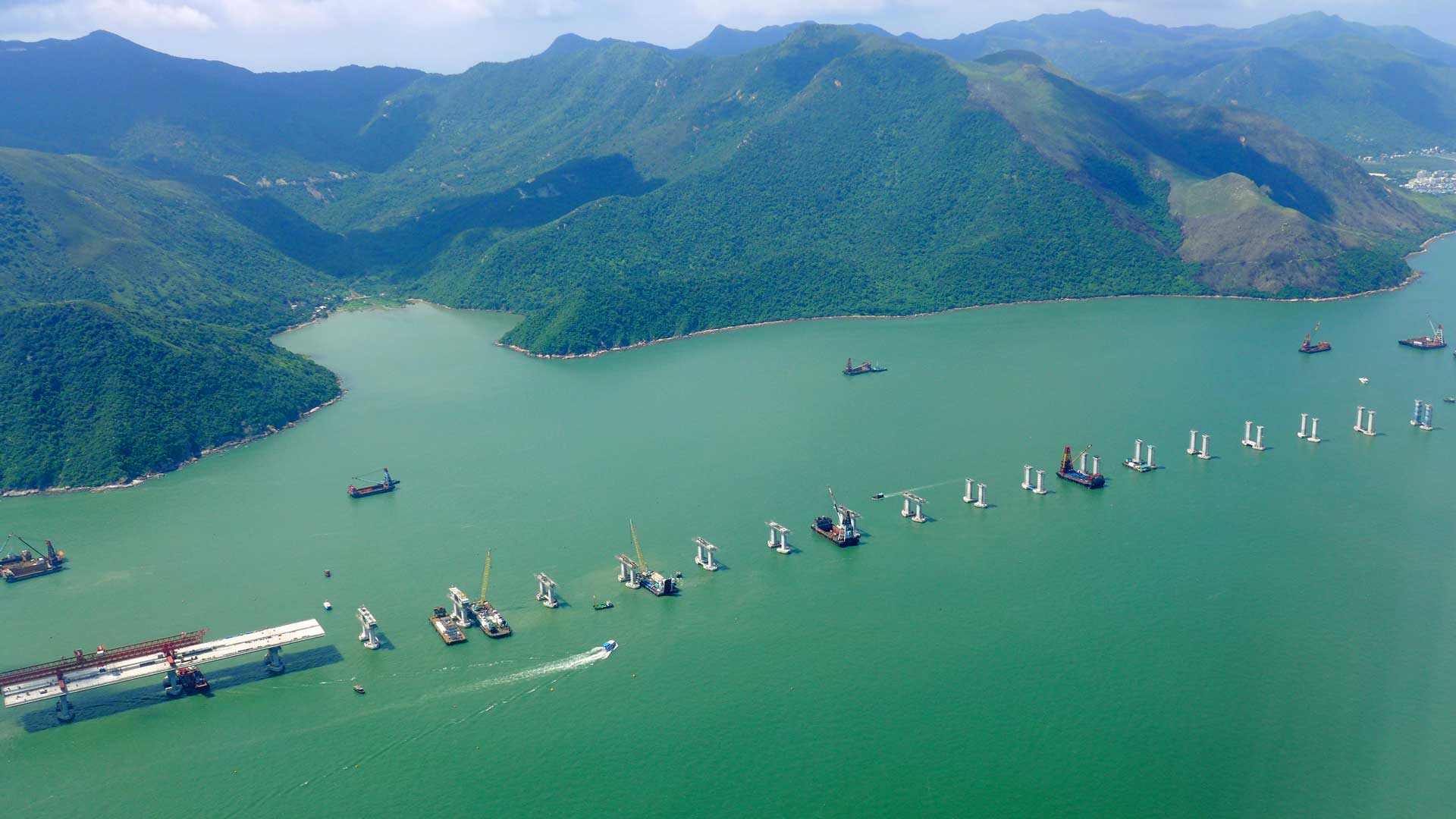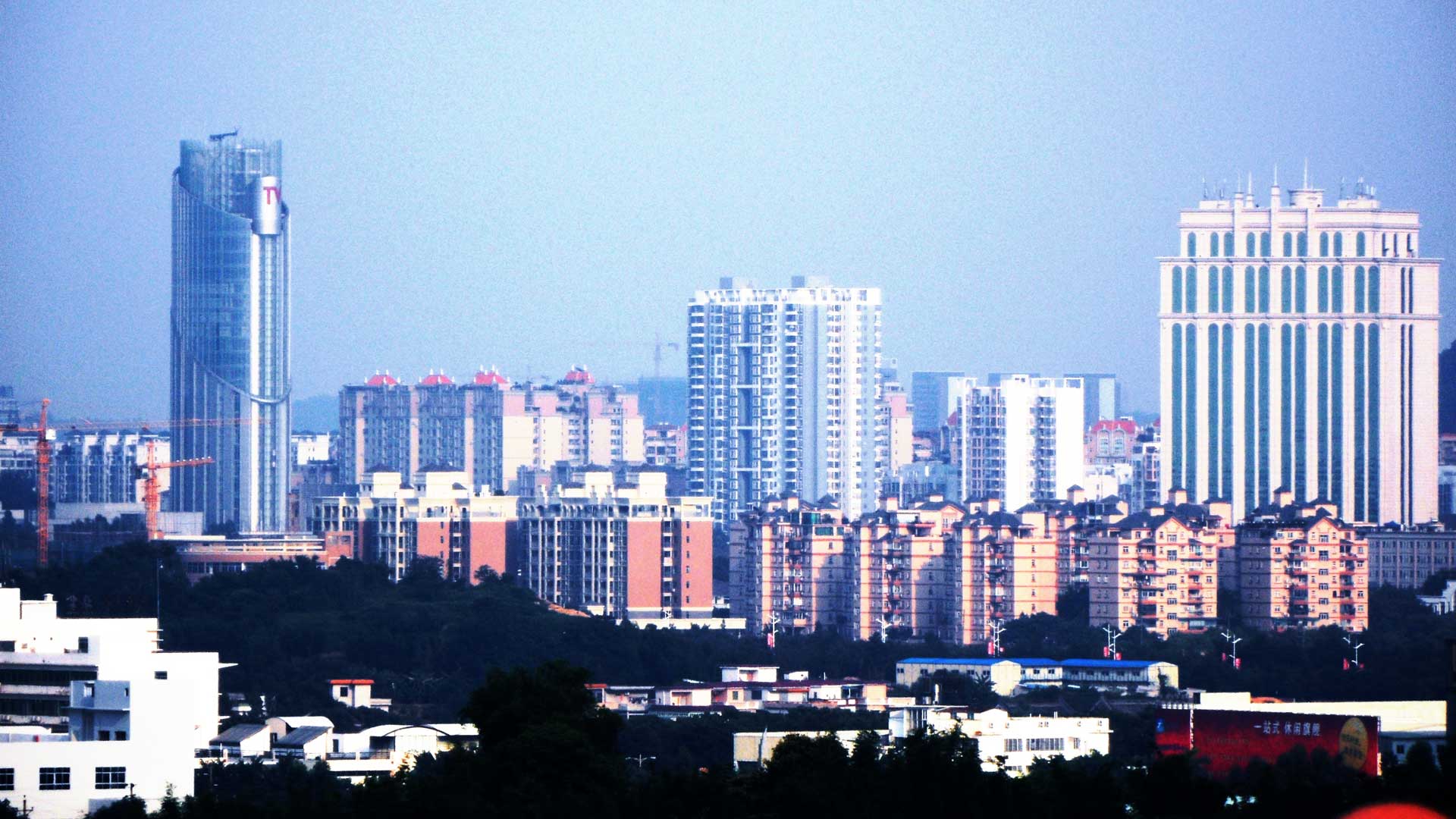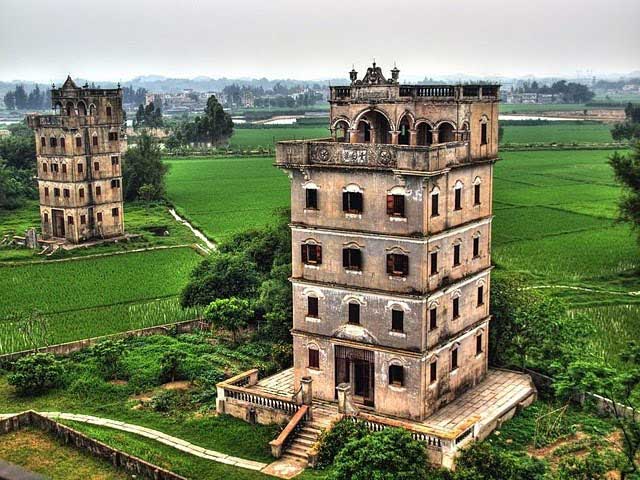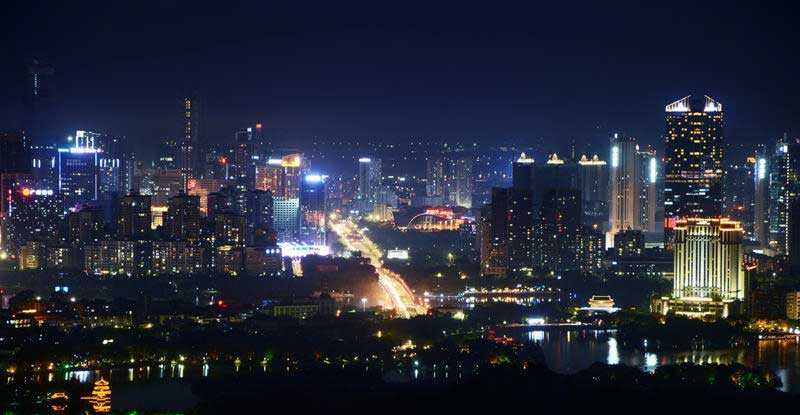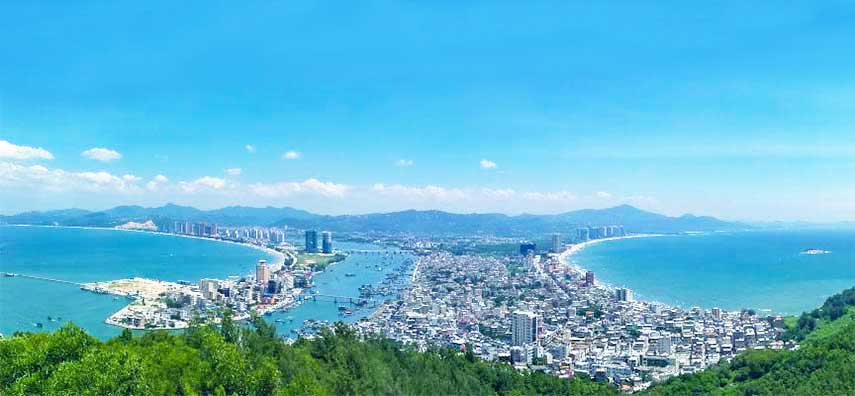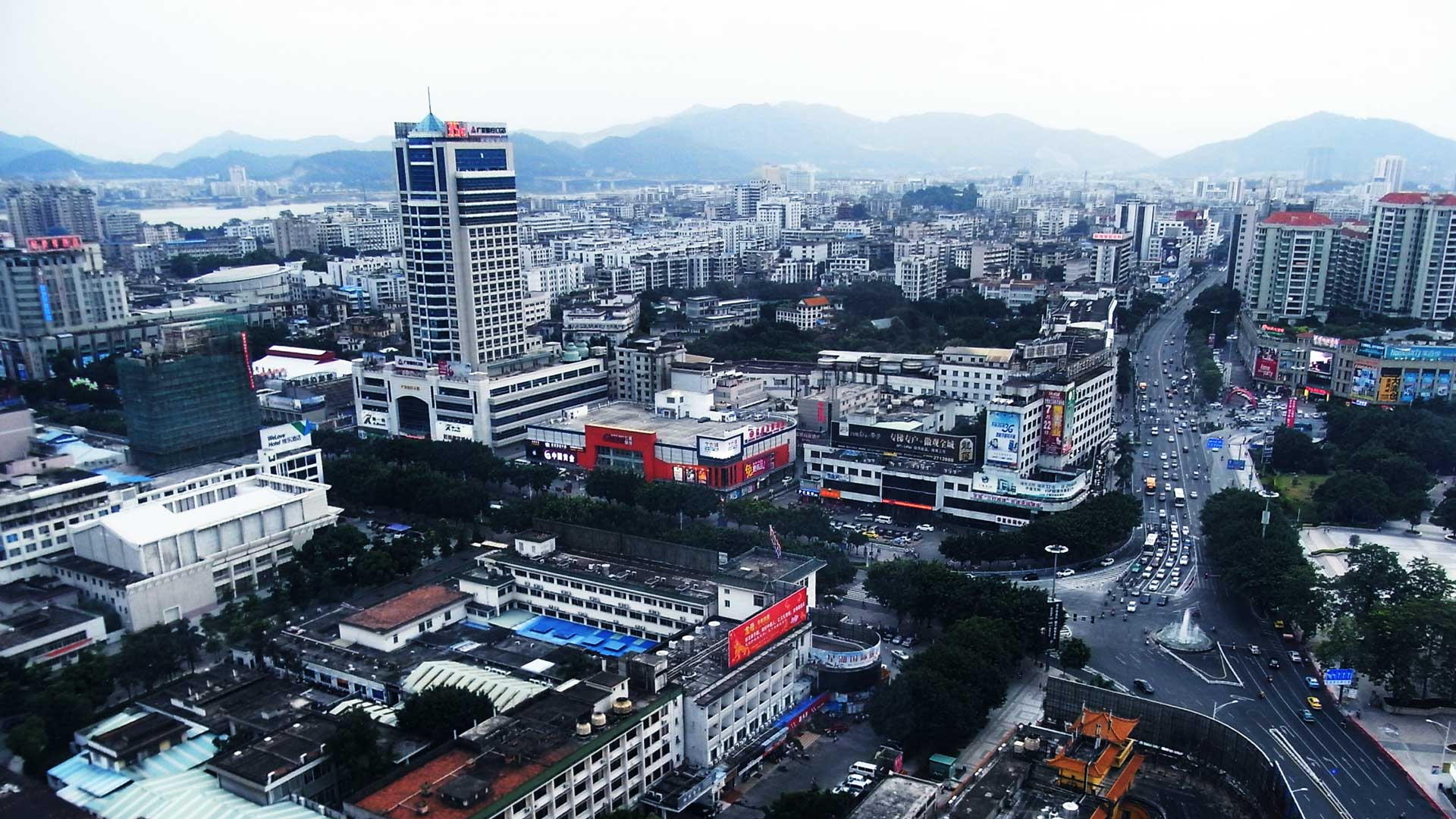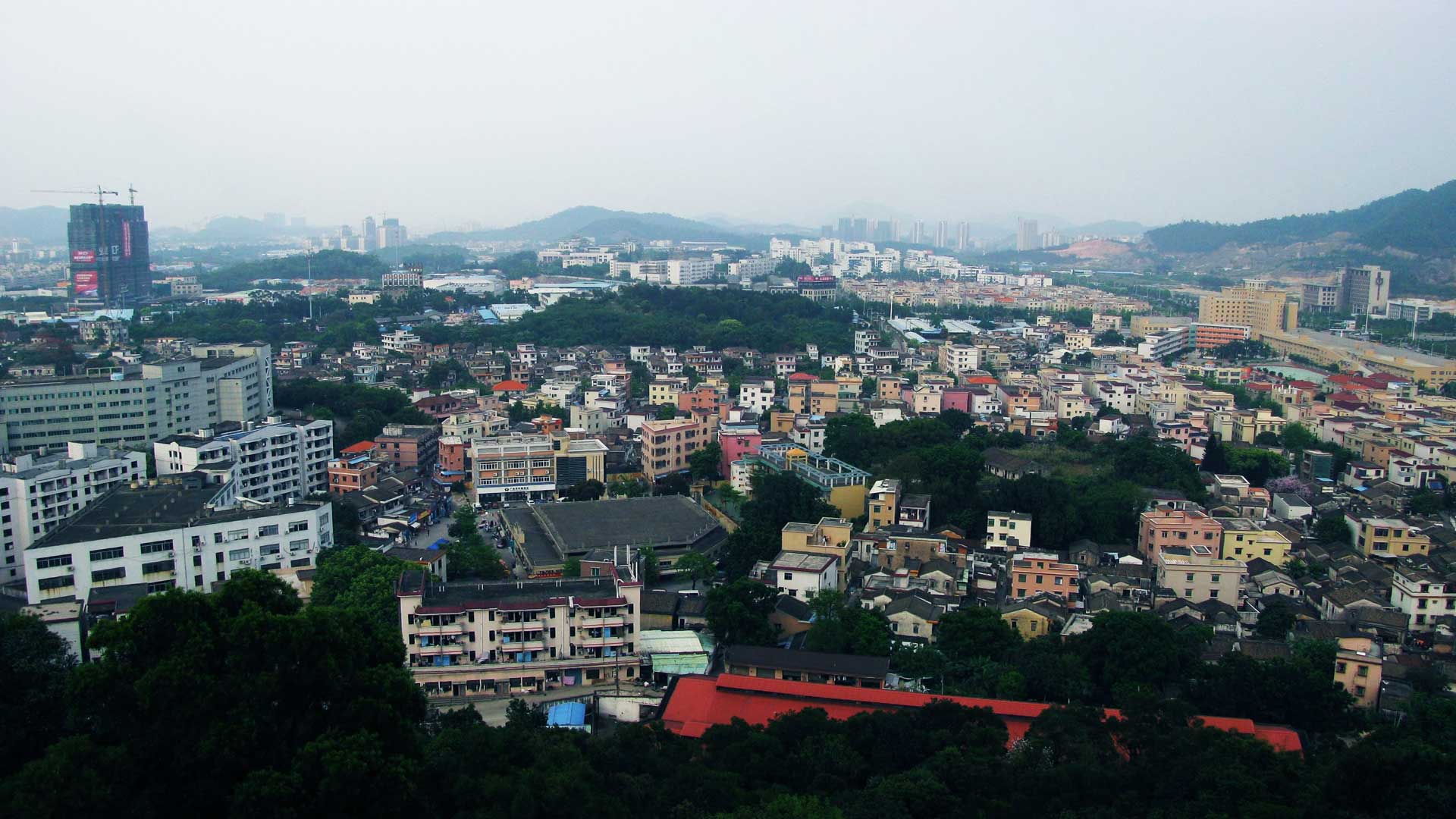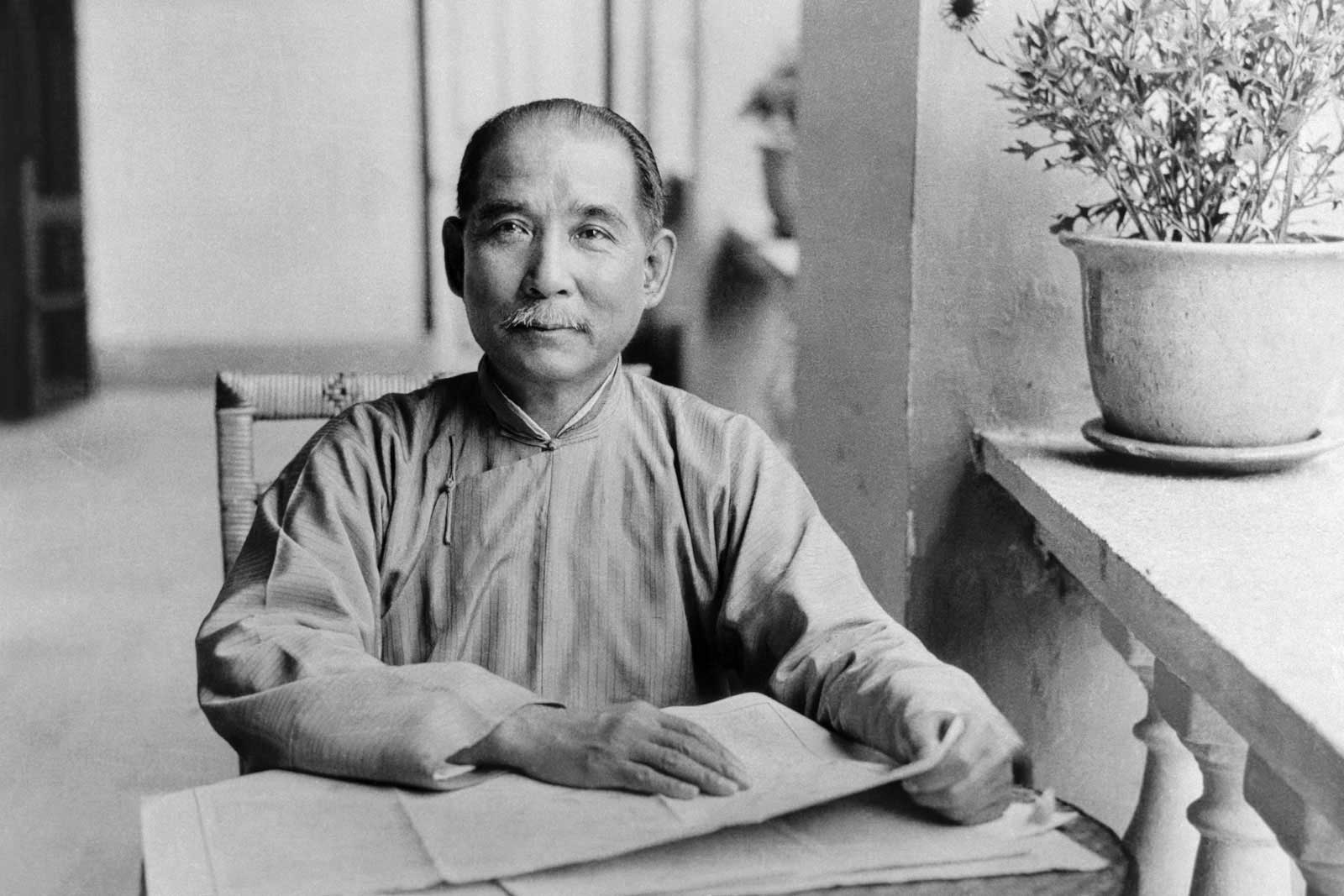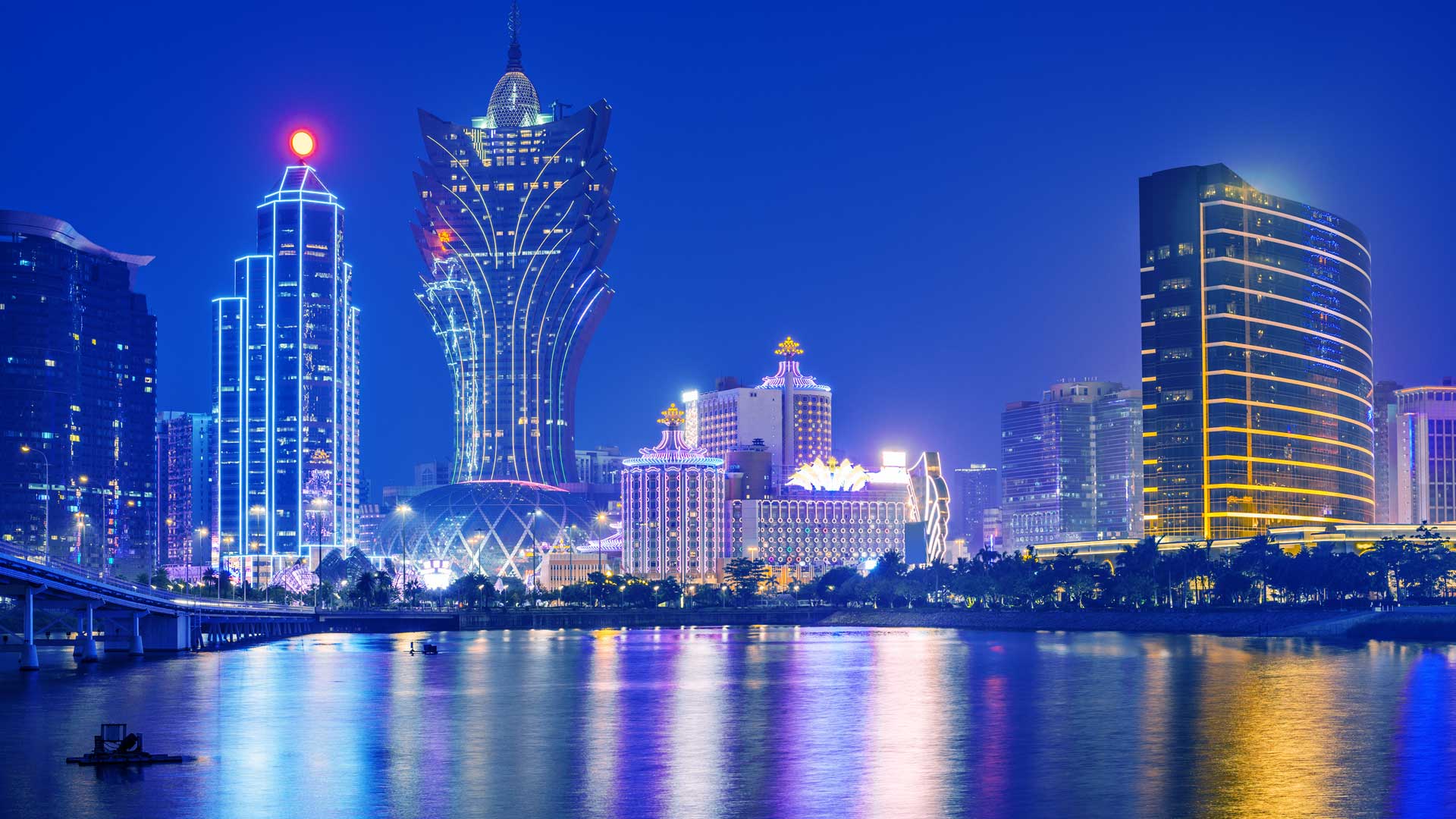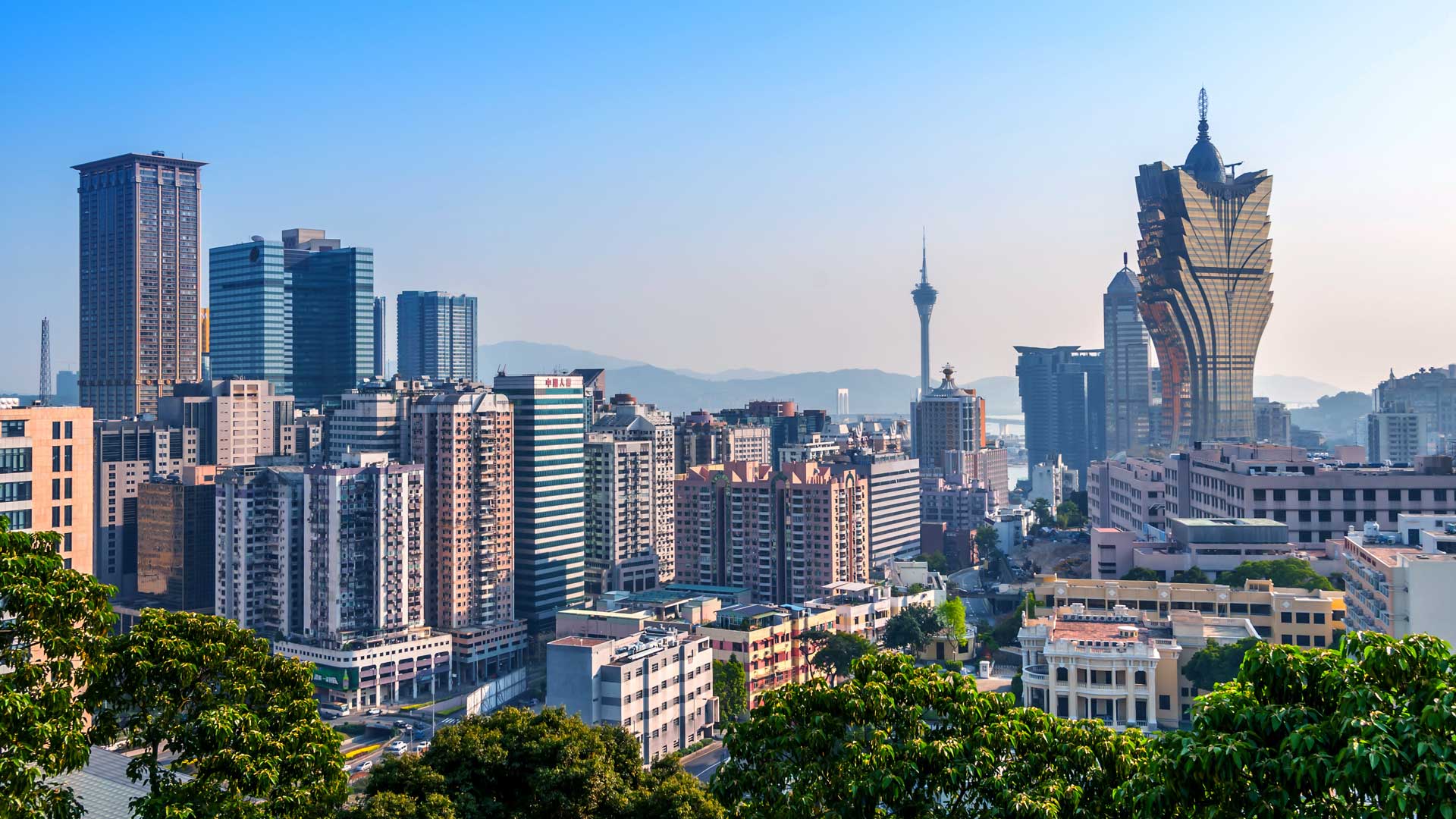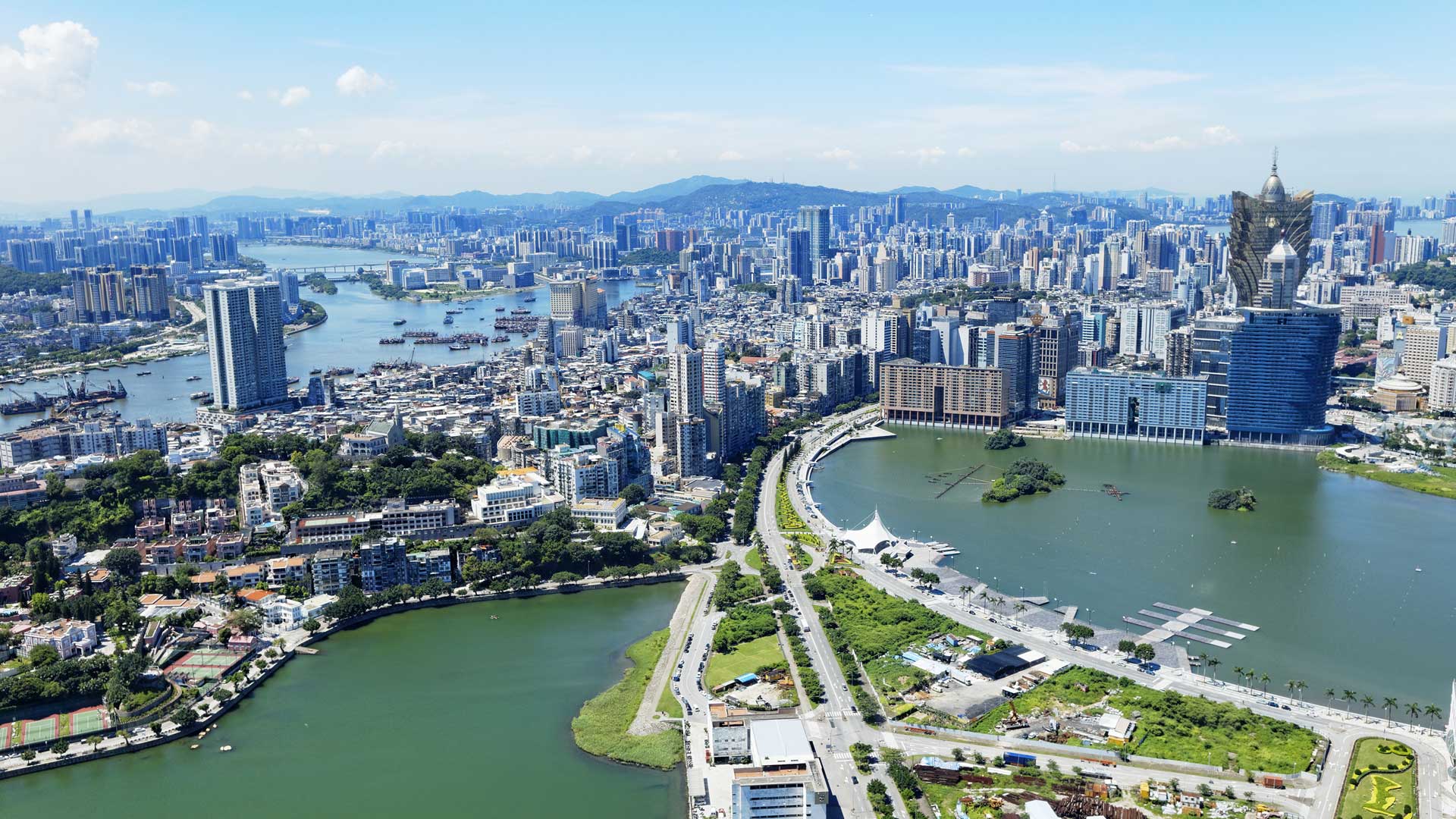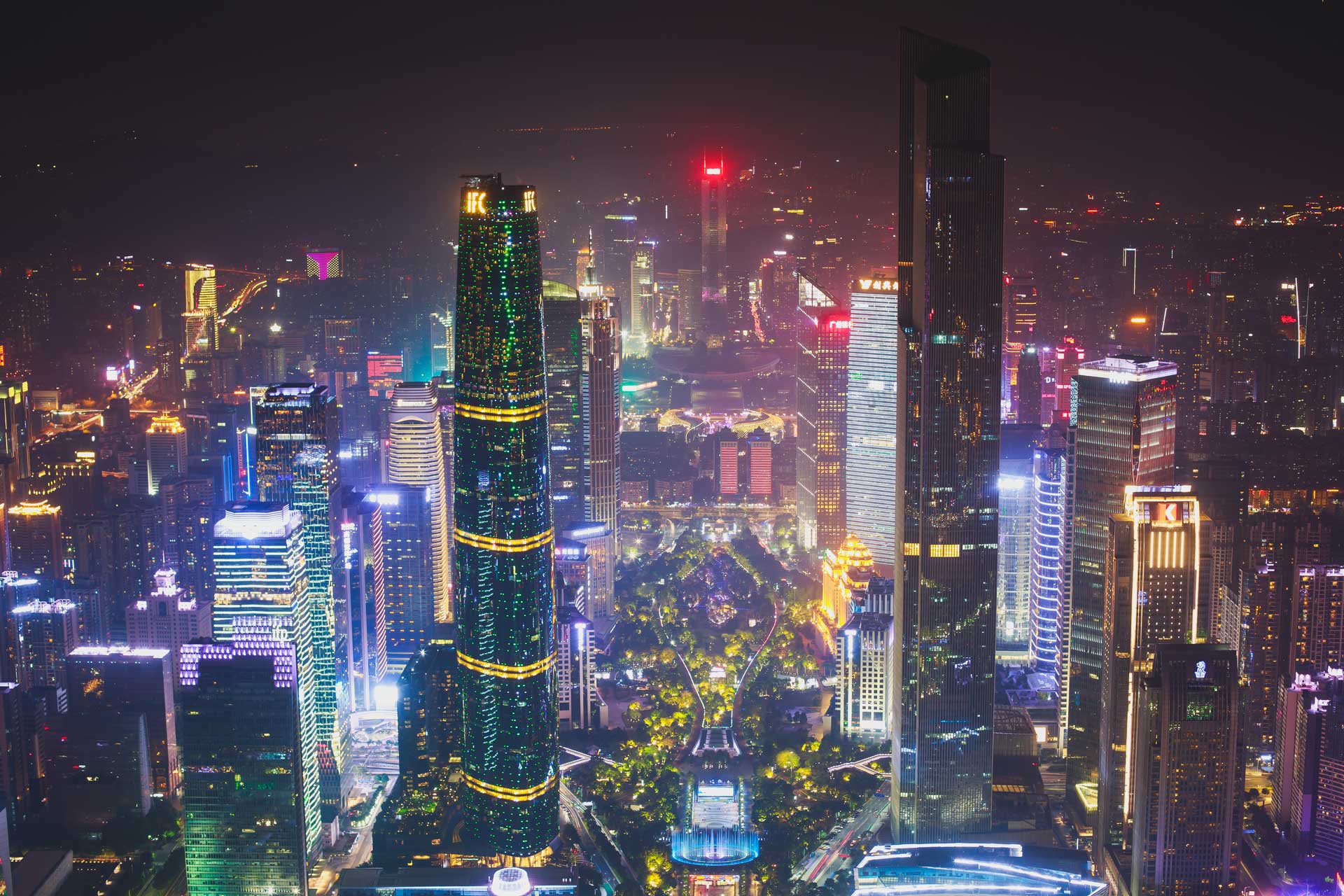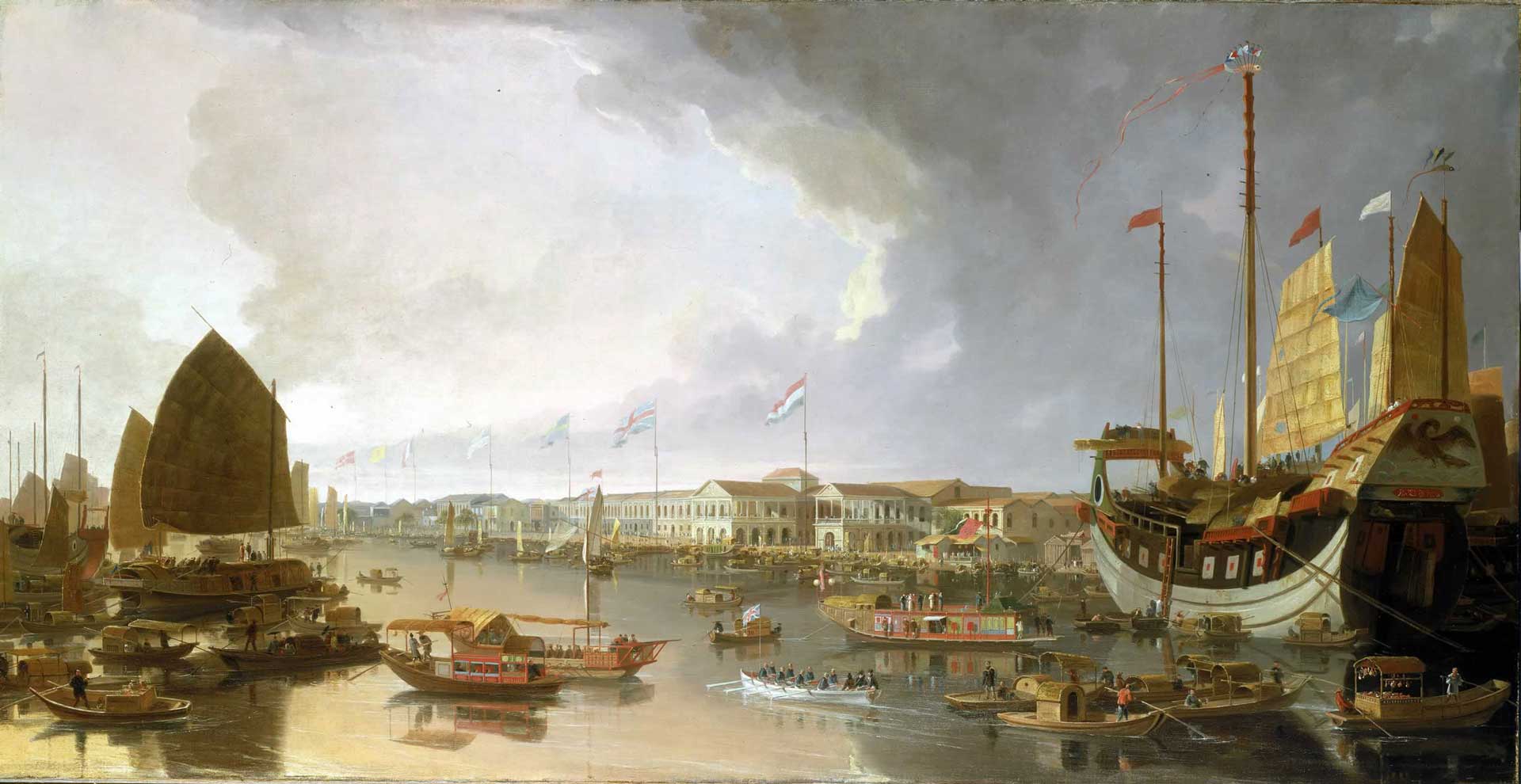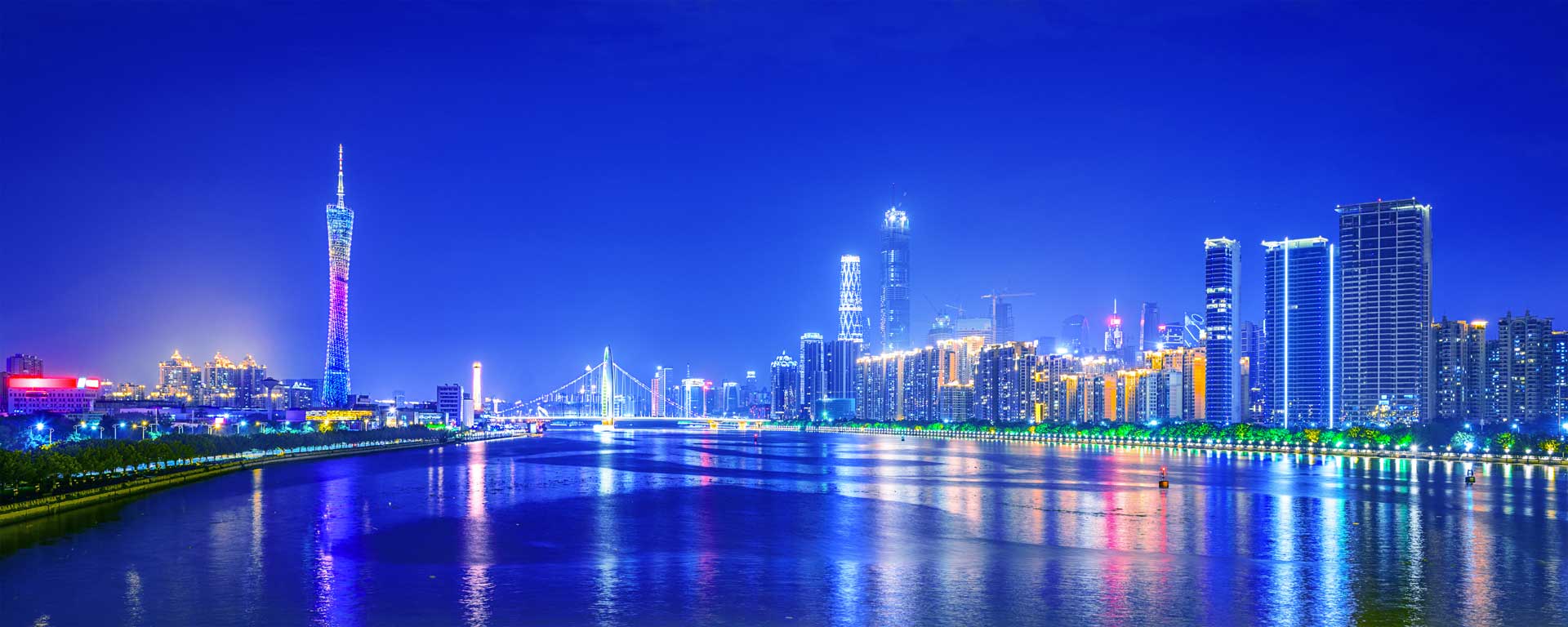Welcome to the PRD
Meet one of the world's largest and fastest growing megalopolis
The Pearl River Delta (PRD) megalopolis is one of the largest and fastest growing urban regions in the world. This massive urban agglomeration is located in Guangdong, a province in Southern China. It consists of 11 independent but highly interconnected cities situated around Guangdong province's Pearl River Delta Bay, the estuary where the 3rd longest river in China ends and discharges into the South China Sea.
The PRD megalopolis is an urban area of gargantuan proportions with few like it in existance. It's home to 65 million people, a population similar to that of the United Kingdom. It covers an area around 55,000 km^2, about the size of the country of Croatia. The GDP of the PRD megalopolis clocks in at over $1.2 trillion, about the same as Mexico. Although the PRD megalopolis makes up about 4.3% of China's population, it contributes to 9.1% of the country's GDP, a whopping 26.9% of its exports, and 7.5% of its total retail sailes of consumer goods. The PRD megalopolis is big in every way, but far from fully grown and in fact just hitting its stride.
Yet the massive and fast growing urban entity that is the PRD megalopolis might not have existed if not for major political and economic shifts in China that began in 1978.
How does the Pearl River Delta compare to countries?
| field | data | Comparable Country |
| Population | 65,000,000 | United Kingdom |
| GDP | $1,200,000,000,000 | Mexico |
| GDP per capita | $18,500 | Greece |
| PPP per capita | $36,000 | Israel |
| Area | 55,000 km^2 | Croatia |
| Density | 1,190 / km^2 | Bangladesh |
A Brief Background
Before 1978, the Pearl River Delta area, like most of China, was primarily rural (just 28% urban) with a poor economy based on agriculture. China had never experienced an industrial revolution like in the US, Japan, and many European countries. Furthermore, China had suffered devastating losses and damages during WW2. Following the war, China's own poor governance had mired the country's recovery and growth. Famines were a common occurance and culminated in the Great Chinese Famine (1959-1961), which led to the starvation of millions. China was in dire straits. But the country's outlook improved after Deng Xiaoping took power in 1978.
Unlike his predecessors, Deng Xiaoping was much more practical. He said "It doesn't matter whether a cat is black or white, as long as it catches mice". In other words, he didn't care about your ideological leanings as long as you were competent and efficient. Not long after Deng Xiaoping became the paramount leader of China in 1978, he passed economic reforms that loosened government control of the economy and opened up the country to trade and investments. One of his most successful ideas was the establishment of Special Economic Zones (SEZ), areas of looser economic regulations than the rest of China. In 1980, one of the first SEZ was established in Shenzhen, then a small town just north of Hong Kong in the Pearl River Delta.
Deng Xiaoping's economic reforms were a wild success, to say the least. China transformed itself from a dirt poor country in 1978 to become the world's second largest economy. Between 1978 and 2013, China's gross domestic product (GDP) grew at an incredible rate of 9.5% per year. At the forefront of China's economic charge was the Pearl River Delta region, which received almost 30% of all foreign investments and grew at an even faster rate of 13.5% per year. Today, the Pearl River Delta's GDP clocks in at over $1.2 trillion, ahead of countries like Mexico and Indonesia, making it the 15th largest economy in the world.
Fueled by its red hot economy, the Pearl River Delta region has grown from a patchwork of cities into the PRD megalopolis, one of the fastest growing and largest urban area in the world. It consists of 5 major metropolitans including Hong Kong, Shenzhen, Dongguan, Foshan and Guangzhou along with 6 smaller cities made up of Macau, Zhaoqing, Zhuhai, Jiangmen, Huizhou, and Zhongshan. Although the population of the PRD megalopolis is estimated to be around 65 million, because data is poor on internal migrants, some estimates place the population of the area to be as high as 120 million, good enough to make it the 12th most populated country in the world after Japan.
Rise of the PRD Megalopolis
To give you more perspective on the colossal urban buildout underway in the PRD megapolis, here are some interesting facts. The PRD megalopolis has more buildings over 150 m (492 ft) than any country in the world except China itself and the United States. The PRD megapolois has laid 356 kilometers of high-speed rail track, making it the 14th longest high-speed rail system in the world. Furthermore, the combined length of the subway metro systems in the PRD megalopolis exceeds every country in the world except the US, Japan, South Korea, and Russia.
The explosive growth of the PRD megalopolis has not gone without notice. Chinese government officials and business leaders have hatched a plan to further integrate the PRD megalopolis. The Greater Bay Area initiative, as laid out in China's 13th Five-Year Plan, aims to achieve this by pouring investments into infrastructure projects. The goal is to create a "one-hour living circle" where someone in Guangzhou can travel to any other place in the PRD megalopolis within an hour. Some key infrastructure projects include the Hong Kong-Zhuhai-Macau Bridge and Shenzhen-Zhongshan Bridge (est. 2021), two of the world's longest cross-sea bridges, and further work on the Pearl River Delta Metropolitan Region Intercity Railway System, a high-speed rail project that will connect every city in the PRD megalopolis.
The hope is that more integration will allow the PRD megalopolis to scale even further and harness more benefits from urban agglomeration. These benefits include greater labor specialization, lower transportation costs, a larger and more accessible pool of consumers and trained workers, and the accumulation of knowledge and human capital. If everything goes according to plan, by 2030 the GDP of the PRD megalopolis will grow to $4.62 trillion, making it larger than the economies of rival bay areas in Tokyo, New York, and San Francisco.
Stay up to date
Find our content interesting? Sign up below for our newsletter to get Geoshen's best content delivered straight to your inbox or follow us on Twitter and get notified when new content is released.
Hong Kong
香港 Pearl of the Orient
population
similar size
area
density
gdp
ppp per capita
Beneath the shadows of Hong Kong's countless skyscrapers is a vibrant streetscene found in few places on Earth. The streets of Hong Kong are noisy, crowded, and full of energy. But the city never feels like it's out of control. There is order to the chaos. People mind their own business, sidewalks are clean despite heavy foot traffic, and buses and subways run like clockwork. There is controlled chaos in Hong Kong, and there is also sublime beauty. Neon signs jut outwards from just about every storefront, crowding the city's streetscape. At night, they light up the streets with their hypnotic, flickering glow. Up above, the towering skyscrapers beam to life, treating sightseers on Victoria Peak to a dazzling display of light.
British Hong Kong
For most of its history, Hong Kong island was a dark backwater inhabited by few people. When China lost the Opium War and ceded the island to the British in 1842, there were about 7,000 people living there in scattered fishing villages. But the British colony quickly grew as many wealthy Chinese from the surrounding area fled there to escape from the devastation of the Taiping Rebellion (1850-1864).
Hong Kong experienced another wave of rapid growth after the Communist Party took control of China 1949. Hundreds of thousands of people sought refuge in Hong Kong including many intellectuals, skilled workers, and artists. They brought with them the skills, experience, and capital to help Hong Kong become the first of the Four Asian Tiger economies to undergo rapid industrialization in the 1950s.
By the 1990s, Hong Kong had become one of the wealthiest and most cosmpolitan city in the world. The city's proximity to China and their shared heritage made Hong Kong a natural outlet for all of communist China's capitalist needs. Hong Kong was the gateway in and out of China for a large portion of their trade, and Hong Kong's sleuth of investments helped China gain its footing on the path to rapid industrialization following Deng Xiaoping's economic reforms in 1978. But success was a two-way street and Hong Kong saw generous returns from their investments in China. When the British returned Hong Kong to China in 1997, the city made up 18% of the entire country's GDP.
Rise of the Umbrella Movement
Despite Hong Kong's close cultural and economic ties to China and especially the Pearl River Delta region, many of the city's residents have grown to resent closer political integration with the mainland.
The British handed Hong Kong back to China in 1997 with the provision that China would allow the city to maintain a high degree of autonomy under the principle of "one country, two systems". China codified this agreement by creating for Hong Kong a political division known as special administrative region (SAR). This allowed the city to manage its own economic, political, and administrative affairs including the ability to mint its own currency, to maintain a unique legal system, and to enforce their own laws. The arrangement was meant to last until 2047, after which Hong Kong would lose its SAR status and become fully integrated with China.
In the years following the handover, China respected this arrangement because Hong Kong was an important cog in China's rapid economic growth. But as the rest of China began to catch up to Hong Kong in economic terms, Hong Kong's share of the country's overall GDP has dipped from 18% in 1997 to less than 3%. The city was no longer special because other Chinese cities like Beijing, Shanghai, and Shenzhen could now stand toe-to-toe with Hong Kong in terms of economic value. This has emboldened Chinese leaders to take a more active role in Hong Kong's political affairs.
In 2014, Chinese officials made the decision to pre-screen candidates for the 2017 election of Hong Kong's Chief Executive. In other words, residents would only be able to vote for candidates that were approved by the central government in China. This sparked outlash among many residents and escalated to become 2014 Hong Kong democracy protests, also known as the Umbrella Movement.
The Umbrella Movement brought together large numbers of protesters who took to the streets demanding free and fair elections. Its name is a reference to the protesters who used umbrellas as defense against the riot police and their pepper spray. The protesters were made up of mostly students whose youthful energy and idealism managed to capture the world's imagination for a short time. But the protests had few allies outside of idealistic students and lacked support from the majority of Hong Kong's own citizens. The Umbrella Movement fizzled out and ultimately failed to bring any deals to the table.
Nonetheless, the fact that the Umbrella Movement even occurred reveals the increasing political tension in Hong Kong as the 2047 date for full integration draws nearer. China will no doubt participate more and more in Hong Kong's internal affairs ahead of that date, which may provoke further backlash in the form of the Umbrella Movement. But as China does in many of its diplomatic dealings, they will seek to counter political distrust with economic reward. In the case of Hong Kong, this means increased infrastructure spending to better connect the city with the PRD megalopolis and the rest of China along with greater access to the country's labor and consumer markets.
Shenzhen
深圳 Silicon Valley of Hardware
population
similar size
area
density
gdp
ppp per capita
For most of its history, Shenzhen was a small and unimportant town in the Pearl River Delta. But Shenzhen's fortunes changed in 1980 when Chinese officials picked the city to become one of China's first Special Economic Zone, which provided the city with economic incentives to attract investors, especially those from Hong Kong, a capitalist haven just south of Shenzhen. And the investors came calling. They poured billions into Shenzhen to build up its manufacturing capabilities, which in turn attracted millions of people to the city looking to work in its many factories. Shenzhen then grew rapidly.
As a result of its rapid economic expansion, Shenzhen has grown from a small city of about 30,000 residents to a megacity of 12 million. To house its booming population, the city has built thousands of high-rises over the years and construction cranes continue to be a common sight. What was once mostly agricultural farmland is now a massive skyline. It includes Ping An Finance Centre, the 4th tallest building in the world and more skyscrapers over 300m+ than any other city in the world except Dubai.
Foxconn City
Today, Shenzhen is home to one of the largest if not the largest manufacturing hubs in the world. Foxconn Technology Group, which produces 40% of the world's consumer electronics including many of Apple's products, runs its biggest and most productive operation in Shenzhen. The company employs as many as 450,000 people inside its walled campus, a kind of city within a city known as "Foxconn City".
Foxconn City's 450,000 employees, about the same number of people as the city of Miami, are crammed inside a massive campus measuring 3 km^2. But the Foxconn campus is like a city in more than just name and size. As you might expect from any municipality, the management team provides a wide range of services for its workers. These include housing, food, retail, banking, medical services, and even a dedicated firefighting squad. Although most of their employees live outside the campus, about a quarter of them spend most of their time living and working inside Foxconn City.
Spirit of shanzhai
Shenzhen is ground zero for a tech ecosystem known as shanzhai. It literally means "mountain fortress", which is a reference to bandits of medieval China who hid in mountains to evade corrupt authority. The contemporary context for shanzhai is a community of hardware makers who work underground or out of the mainstream eye. This allows them to maneuver around what they feel to be inefficient restrictions like IP laws, product licenses, and even taxes.
Although shanzhai makers are infamous for their cheap knockoffs of brand name product like the iPhone, many are more creative and attempt to produce original designs. Unrestricted by IP laws, they take the opportunity to mix and match ideas from different sources to create new products. Designs, materials, and improvements spread freely in the shanzhai ecosystem, enabling makers to not only sample features from mainstream products but also to riff from one another as well. A lot of times they end up making something wonky, but the freedom to reuse and remix ideas without repercussion has the potential to provide the critical mass for a wave of innovation.
Dongguan
东莞 China's Sin City
population
similar size
area
density
gdp
ppp per capita
The industrial city of Dongguan sits between Guangzhou to the north and Shenzhen to the south. Before the economic reforms of 1978, Dongguan was a modest agricultural town. But between 1978 and 2008, during the height of China's economic boom, Dongguan grew by double digit percentage points every year, faster than most other Chinese cities. Thanks to its explosive growth, Dongguan is now the 15th largest city in China in terms of GDP and is the country's 4th largest exporting city behind just Shenzhen, Shanghai, and Suzhou.
Much of Dongguan's urban and economic growth since 1978 has been driven by low-cost and labor-intensive manufacturing. Dongguan used investments from the central government and foreign investors like Taiwan and Hong Kong to build thousands of factories, which then produced much of the world's shoes, clothing, furniture, toys, and consumer electronics. For this reason, Dongguan is often referred to as the "World's Factory".
Sin City
Dongguan is known as the "World's Factory", but the city also has a seedier reputation as China's capital of sex. Its sex industry is China's largest, and it's estimated that at its peak in 2014, up to 10% of the city's population of 10 million worked in the sex trade. Dongguan's rampant prostitution is due to a gender imbalance that favors males, a rarity in a country that has more men than women. That's because factory owners in Dongguan prefer to hire women, many of whom came from other parts of China. Hundreds of thousands of them later turned to the sex trade when they realized there was more demand for their bodies than for their hands.
But Dongguan's sex industry took a hit in 2014 when China Central Television aired an exposé on the city's widespread sex trade. Not long after it aired, over 6,500 police raids took place in almost 2,000 entertainment venues including saunas, karaoke bars, massage parlours, and other sex-related businesses. The crackdown is estimated to have cost Dongguan's sex industry up to $8 billion in losses and has driven the remaining sex workers underground to avoid prosecution.
Foshan
佛山 Guangzhou's Little Brother
population
similar size
area
density
gdp
ppp per capita
Foshan is known as Guangzhou's "Little Brother" because it borders Guangzhou on the west and has always been the smaller of the two cities. In the 19th century, Foshan was considered the "Birmingham of China" because its steel industry was one of China's most productive. Like many Chinese cities, Foshan experienced rapid population and economic growth following Deng Xiaoping's economic reforms in 1978 and has become an important member of the PRD megalopolis.
Today, Foshan is a massive city of over 9 million with a thriving economy and a diverse set of manufacturing capabilities. In fact, the city has more than 30 districts, each specializing in producing certain products. For example, the Shunde District of Foshan produces more than half of the world's air conditioners and refrigerators. In Lecong town, you can find the world's largest furniture market with direct access to countless numbers of producers and suppliers. Foshan also has an area devoted to more advanced industries called Hi-Tech Development Zone with capabilities in automobile assembly, biotechnology production, and chemicals processing.
The city of Foshan is perhaps most famous for being the ancestral home of legendary martial artists Ip Man and his protégé Bruce Lee. Ip Man was born in Foshan, which had been a martial arts powerhouse since the Ming Dynasty. It was there in Foshan where Ip Man learned and mastered Wing Chun, one of "The Three Great Martial Art Schools of the South". Ip Man's reputation as a skilled martial artist attracted talented students like Bruce Lee, who would later help spread and popularize Chinese martial arts around the world through his famous kung fu movies.
Zhuhai
珠海 The Chinese Riviera
population
similar size
area
density
gdp
ppp per capita
Before 1980, Zhuhai was a collection of fishing villages with a population around 100,000. Because Zhuhai bordered the gambling haven of Macau to the north, the city was selected to become a Special Economic Zone in 1980 and the rest was history. Zhuhai's economy boomed. The city is now considered one of the cleanest and safest in China with great weather and easy access to Macau and Hong Kong. Due to all of the above, Zhuhai is also a premiere tourist destination with the 3rd highest number of tourists in Guangdong below just Guangzhou and Shenzhen (excluding Hong Kong and Macau).
In late 2018, the world's longest sea-crossing bridge will open to connect the cities of Hong Kong, Macau, and Zhuhai at a cost of USD $20 billion. The 55 km (34 mi) long Hong Kong-Zhuhai-Macau Bridge will stretch across the Pearl River estuary and cut travel times between Hong Kong and Zhuhai from 4.5 hours to just 40 minutes by road. The travel time will also be shorter than the existing ferry service between Hong Kong and Macau, which takes more than 1 hour. This project is part of the Chinese government's goal to create a "one-hour living circle" that would make it possible to travel from any one part of the PRD megalopolis to another within an hour.
Jiangmen
江门 Homeland of Overseas Chinese
population
similar size
area
density
gdp
ppp per capita
Jiangmen is located just west of Zhongshan on the lower reaches of the Xijiang (West River), a tributary to the Pearl River. The city has the 2nd largest river-port in Guangdong (the largest is in Guangzhou), and it has also built a name for itself as a tourist destination because of the large number of hotspring resorts in the area.
Jiangmen is most well known as being the ancestral homeland for a large number of overseas Chinese. At least 3.68 million overseas Chinese living in 107 countries (such as the United States, Canada, Mexico, and Venezuela) can trace their ancestry back to the rural areas around the city of Jiangmen. This region is known as Siyi or the Four Counties. Mass emigration from Siyi began in the mid-19th century following the devastation caused by the Taiping Rebellion and Hakka-Punti Clan Wars. Until the 1950s, it's estimated that about 80% of the Chinese American population in the United States came from Siyi. These Siyi emigrants maintained a close connection to their ancestral homeland, sending back not only remittance but also new ideas. They helped fund the construction of the unique diaolou, a type of Western inspired fortress tower found only in Siyi.
Rapid economic developments in China since the 1980s has caused a slowdown in emigration from Jiangmen and Siyi. But the region continues to be a large source of Chinese emigrants, many of whom can now maintain closer ties than ever to their homeland thanks to cheap flights and the internet. Just as prior emigrants had brought back ideas that led to the development of the diaolou, newer emigrants will likely help introduce new ideas from abroad that will help Jiangmen become a more creative hub in the future.
Huizhou
惠州 Palermo of China
population
similar size
area
density
gdp
ppp per capita
Huizhou is the easternmost city in the Pearl River Delta. The city is situated along the Dong River (translated as the East River), one of many tributaries to the Pearl River.
Until the 1980s, Huizhou was one of many sleepy towns dotting Guangdong. Now it is a city of over 4 million and home to a thriving manufacturing base that complements industries in neighboring Shenzhen and Dongguan. A direct high-speed railway line (with a max speed of 200 km/hour) called Guanhai City Railway directly links Huizhou with Dongguan, and the line itself is part of the Pearl River Delta Metropolitan Region Intercity Railway System that links all the cities of the PRD megalopolis. Huizhou and Dongguan are also building the world's first automated high-speed railway with an estimated completion date in early 2019.
Huizhou's historical and architectural charm and its proximity to Hong Kong has made the city one of the top destinations for the wealthy elite, many with a seedy reputation. Like the mafiasos in Palermo, Hong Kong Triad organizations have a strong foothold in the area. Their gaudy display of wealth (even by Chinese standards) is evident by the disproportionate presence of high-end cars and 5-star hotels in the city. Oddly enough, despite Huizhou's close ties to the criminal underworld, it's considered one of the safest cities in China, likely because most criminal activity is nonviolent and kept in order under the auspices of corrupt officials.
Zhaoqing
肇庆 Beginning Auspiciousness
population
similar size
area
density
gdp
ppp per capita
Zhaoqing is the westernmost city in the Pearl River Delta. Its name literally means "Beginning Auspiciousness", which was the name given to the city by Emperor Huizong of the Song Dynasty in 1118. Although Zhaoqing the biggest city in the region in terms of area, it's also the least densely populated. Historically, the city was one of the larger and more important urban centers in the south. But since the economic reforms of 1978, other cities in Guangdong like Dongguan and Shenzhen have eclipsed Zhaoqing in terms of population and economic output.
The city has a large argicultural sector and thriving commodity sector because of mining operations in nearby mountains. In contrast, Zhaoqing's manufacturing sector is underdeveloped compared to other cities in the PRD megalopolis. Nonetheless, their manufacturing capabilities are growing fast and will become more specialized to fill in niches in the PRD megalopolis.
Zhongshan
中山 The Revolutionary City
population
similar size
area
density
gdp
ppp per capita
Zhongshan is situated on the western side of the Pearl River estuary directly opposite of Shenzhen. Zhongshan has the distinction of being one of the few cities in China named after a person. The city was originally called Xiangshan (translated as Fragrant Mountain), and it was one of the first cities in China to be liberated from Manchurian rule following the Xinhai Revolution (1911). Xiangshan was the birthplace of Dr. Sun Yat-sen, the first president of China and "The Father of Modern China". Following his death in 1925, the city of Xiangshan was renamed Zhongshan in his honor (his name is spelled Zhongshan in Mandarin Pinyin).
Although Zhongshan is one of the smaller cities of the PRD, it plays an important role in facilitating goods between the more important cities of Guangzhou and Macau. Zhongshan is also working with Shenzhen to build the Shenzhen-Zhongshan Bridge, which will be one of the longest bridges in the world. With an estimated completion date in 2021 at a cost of $4.83 billion, the 51 km (30 mi) bridge will span the Pearl River estuary and connect Zhongshan on the western side and Shenzhen on the eastern side. Once completed, the bridge will cut travel time between Zhongshan Shenzhen from nearly 2 hours to just 30 minutes.
Macau
澳门 Monte Carlo of the Orient
population
similar size
area
density
gdp
ppp per capita
Macau is located on a peninsula just south of Zhuhai and southwest of Hong Kong by boat and bridge. Like Hong Kong, Macau was once an European colony. But because of its small size, the city was never able to compete with Hong Kong in terms of trade and finance. So the government found a way to generate revenue by legalizing gambling, and its casinos now attract millions of people every year. Macau is now considered the gambling capital of the world and has built its economy almost entirely around gambling and tourism.
A former Portuguese colony, Macau was handed back to China in 1999 and became one of two Special Administrative Regions in China (the other being Hong Kong) with its own separate administrative and financial system. Since 1999, its economy has soared, making even the explosive economic growth in the rest of China look sluggish. Macau's avergage annual growth rate between 1999 to 2017 has been an incredible 12%, peaking at a whopping 27% in 2010 and raising its GDP from $6.5 billion to $45.1 billion. As a result, Macau's residents are some of the wealtiest in the world with the 2nd highest PPP per capita of any city or country, trailing just Qatar.
Macau's economic success is due to its massive and lucrative gambling industry. Macau is the only place in China where gambling is legal, and this law has helped the city become the largest gambling city in the world by revenue since 2006. In 2017 their gaming revenue reached $28 billion, by far the largest in the world and 4 times greater than the runnerup Las Vegas, whose gambling revenue was just $6.4 billion.
In 1962, officials in Macau had allowed its gambling industry to become monopolized by a company called Sociedade de Turismo e Diversões de Macau. But this legalized monopoly ended in 2002 when the city decided to open its gambling market to more domestic and foreign competition.
The largest investors since then have been casino owners from Las Vegas who have poured billions into building new casinos in Macau. Most casinos in Macau are located along the city's southern waterfront, but Las Vegas investors have chosen to build their casinos on the Cotai Strip, a major land reclamation project that has joined the islands of Coloane and Taipa, with the vision of creating a "Las Vegas Strip of the East". Several Las Vegas style casinos have already been built with many more under construction. The most notable one is the Venetian Macao, which is the largest casino in the world.
Guangzhou
广州 The largest city in the Pearl River Delta
population
similar size
area
density
gdp
ppp per capita
Guangzhou is one of the oldest cities in Guangdong province with over 2,200 years of history. It's also the capital of Guangdong and the most populated city in the PRD megalopolis.
The original settlement of Guangzhou sits between the foot of the Baiyan Mountain in the northeast and the east bank of Pearl River to the southwest. The mountains provided a buffer against aggressors, and farmers were able to take advantage of the rich alluvial plain of the Pearl River Delta.
Early Han invaders also noticed the strategic significance of Guangzhou's geographic position. The city began as a military outpost when Qin Shi Huang, the first emperor of China, ordered an invasion on the lands of the Baiyue tribes in 221 BCE. The military campaign lasted 7 years. After the Baiyue were subdued and assimilated, Guangzhou became a major city along the Chinese Empire's southern frontiers. The city became a key destination on the maritime Silk Road and its busy port attracted merchants from as far away as the Middle East.
Decline of China's international port
Beginning in the 18th century, successive Chinese emperors chose Guangzhou to become the only port in which foreigners could conduct trade. This was known as the Canton System, named after Canton, the original English name for Guangzhou. The system stipulated that any foreigners who wished to trade with China must deal directly with Chinese merchants known as the Cohong.
The Cohong managed their operations from the Thirteen Factories on the banks of Canton, and they maintained their lucrative monopoly until it was shut down by the British following China's defeat in the First Opium War (1839). The British also obtained the territory of Hong Kong, whose port would eventually siphon away much of the foreign trade that once took place in Guangzhou.
Although Guangzhou no longer held a monopoly over foreign trade in China, the city remained an important port city. Following Deng Xiaopeng's economic reforms in 1978, Guangzhou benefitted from investments that came from its close connection to overseas Chinese and its proximity to capitalist Hong Kong and the newly minted Special Economic Zone in Shenzhen.
Renaissance in Guangzhou
Today, Guangzhou is an economic juggernaut and one of the primary manufacturing hubs in Guangdong along with Shenzhen, Foshan, and Dongguan. But the city, far from content with being just a manufacturing center for foreign companies, has managed to move up the value chain and become a center of innovation. Guangzhou is the headquarters of NetEase, one of the largest video game publishers in the world, and UCWeb, the developer of one of the most popular browsers in China.
Although Guangzhou has been a cosmopolitan city for much of its history, the city lost most of its global prestige towards the end of the 19th century following the Opium Wars and the rise of Hong Kong. However, the city has managed to bounce back on the global scene with its strong manufacturing base, its uptick in innovation, and its world-class infrastructure. Guangzhou is now one of the most prosperous cities in China and is considered a global alpha- city in the same league as San Francisco, Washington D.C., and Buenos Aires. In recent years, due to Guangzhou's continuing prosperity and hyper urban growth, the city has attracted large numbers of immigrants from poorer regions in Southeast Asia, the Middle East, Eastern Europe, and Africa. For this reason Guangzhou has become known as the "Capital of the Third World".
Become a sponsor
Did you find our content interesting? Show your support by sponsoring us at Patreon. Your sponsorship helps us continue to make more of the content you enjoy.
Sponsor Us